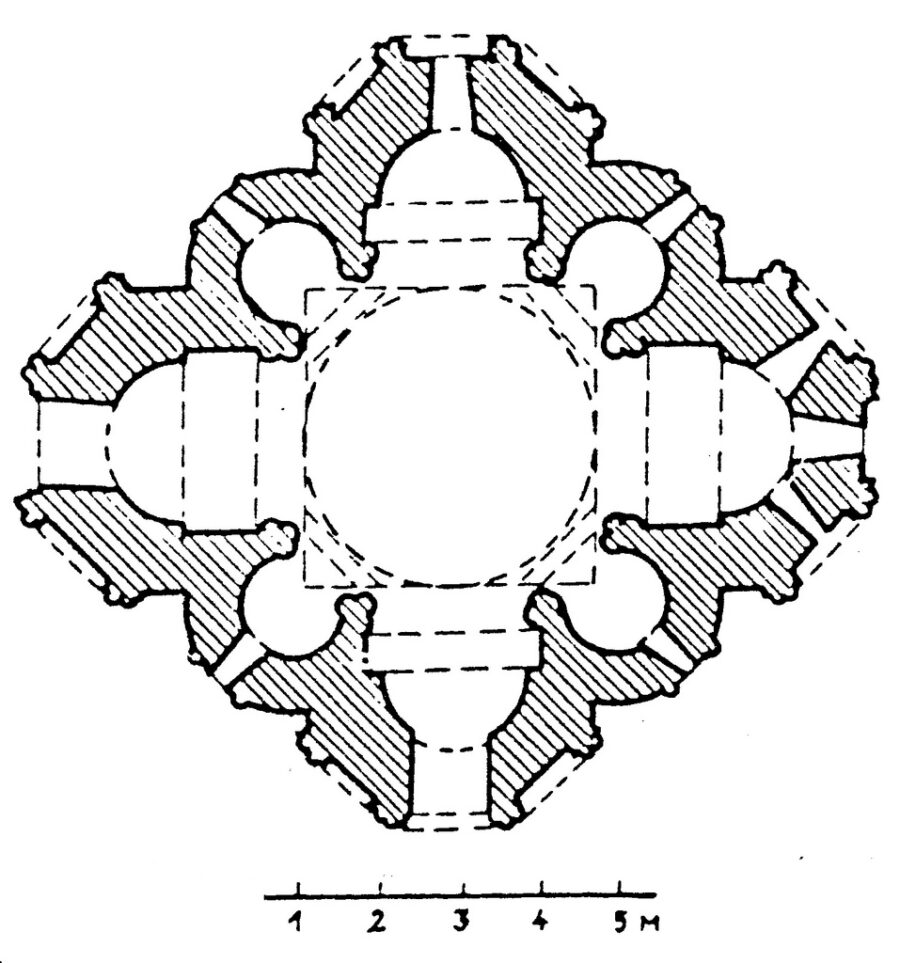Brimscombe Mill
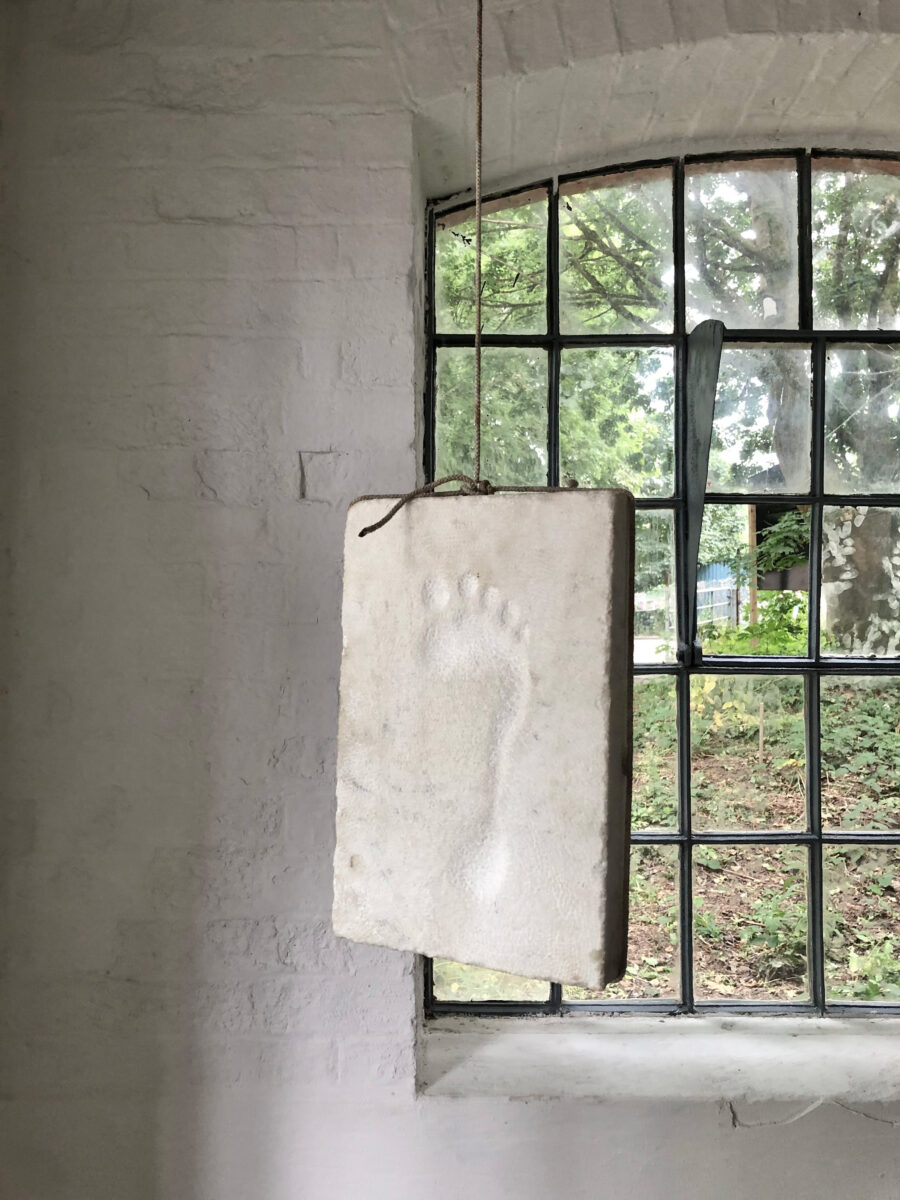
We recently assisted in the curation and organisation of a community arts exhibition and series of workshops at Brimscombe Mill, Stroud. The previously disused mill building is part of a wider complex of industrial buildings that have been re-purposed for community uses, overseen by The Grace Network charity. We worked alongside curator Saffron Knight, advising on the treatment of the building’s internal fabric, in particular how the main space would be turned from a derelict space into a usable venue for various community facing activities. The opening public art event ran from 29th June – 1st July 2023 and shall be the first in a series of programmed events within the newly renovated space.





Low-Carbon Retrofit

We were recently appointed to oversee the low-carbon retrofit and ground floor rear extension of a Victorian mid-terrace property in Gloucestershire. The scheme saw a full internal reconfiguration at ground floor level to maximise efficiency of the kitchen, living and dining areas of the property, blending the existing with the new.
The majority of works focussed on improving the existing condition towards the rear of the property, replacing a three-quarter-width conservatory that was limited in size and of insufficient build quality. A full width single storey rear extension was granted at planning stage to replace the existing, intended to maximise the use and quality of this particular area of the family home.
A rich pallet of reclaimed materials was used, nodding to the local vernacular building style and conservation area. This process involved sourcing reclaimed imperial brick stock, re-purposing existing stone lintels discovered on site and specifying some engineering brick details for the proposed openings of the extension.
A low-carbon approach was taken during the specification and build process, particularly for the proposed extension area. Here, a geocell and limecrete build up was used for the floor build-up, which greatly reduced the amount of concrete used on site, as well as limiting the amount of excavation required.
The compact, sloped nature of the site presented various challenges and was influenced by the close proximity of neighbouring properties and their gardens. An adjoining cellar space which was located beneath a flying freehold was present and added to the complexity of the works, from both a design and procurement perspective.
The project involved taking the scheme through planning and detailed design stages, tender stage and later on to site, ahead of its Summer 2023 completion.
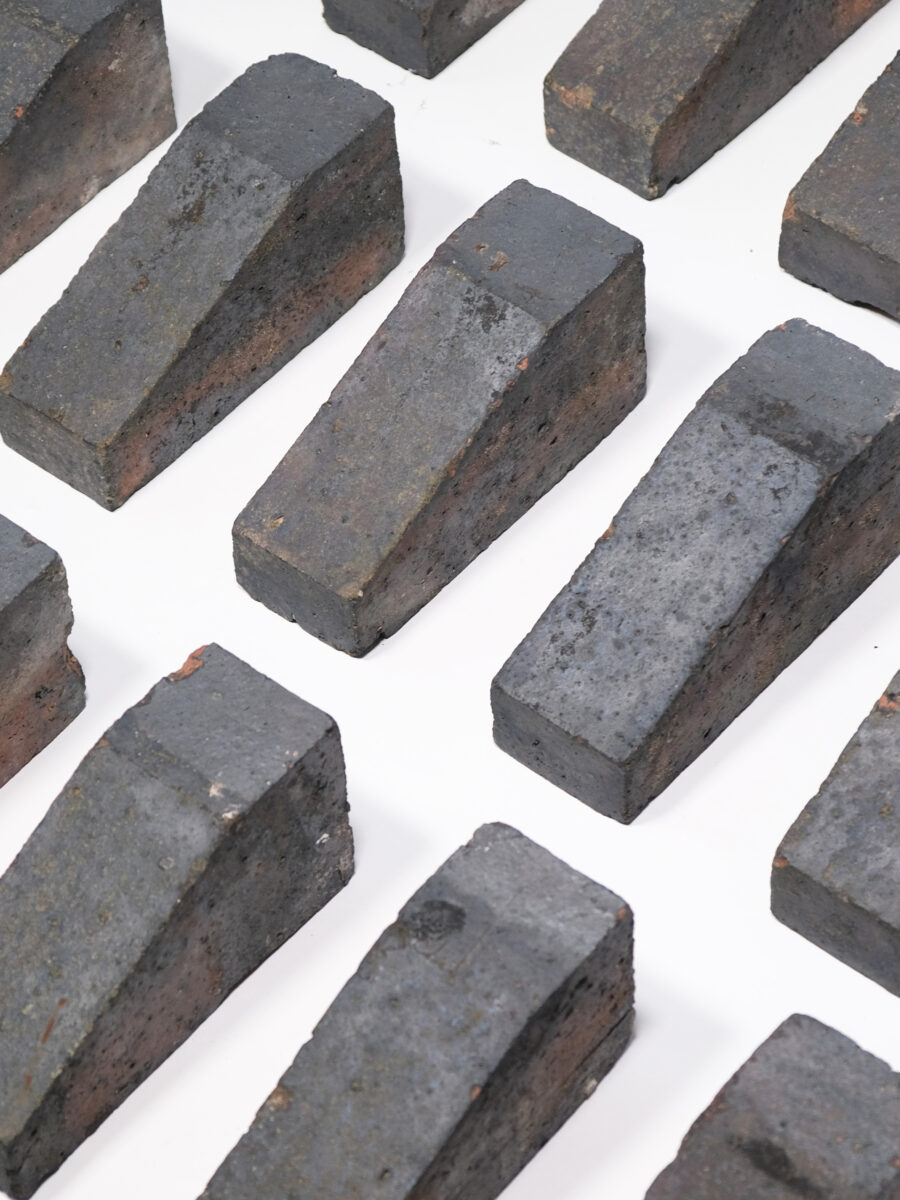



Interim Forms X Future Reality
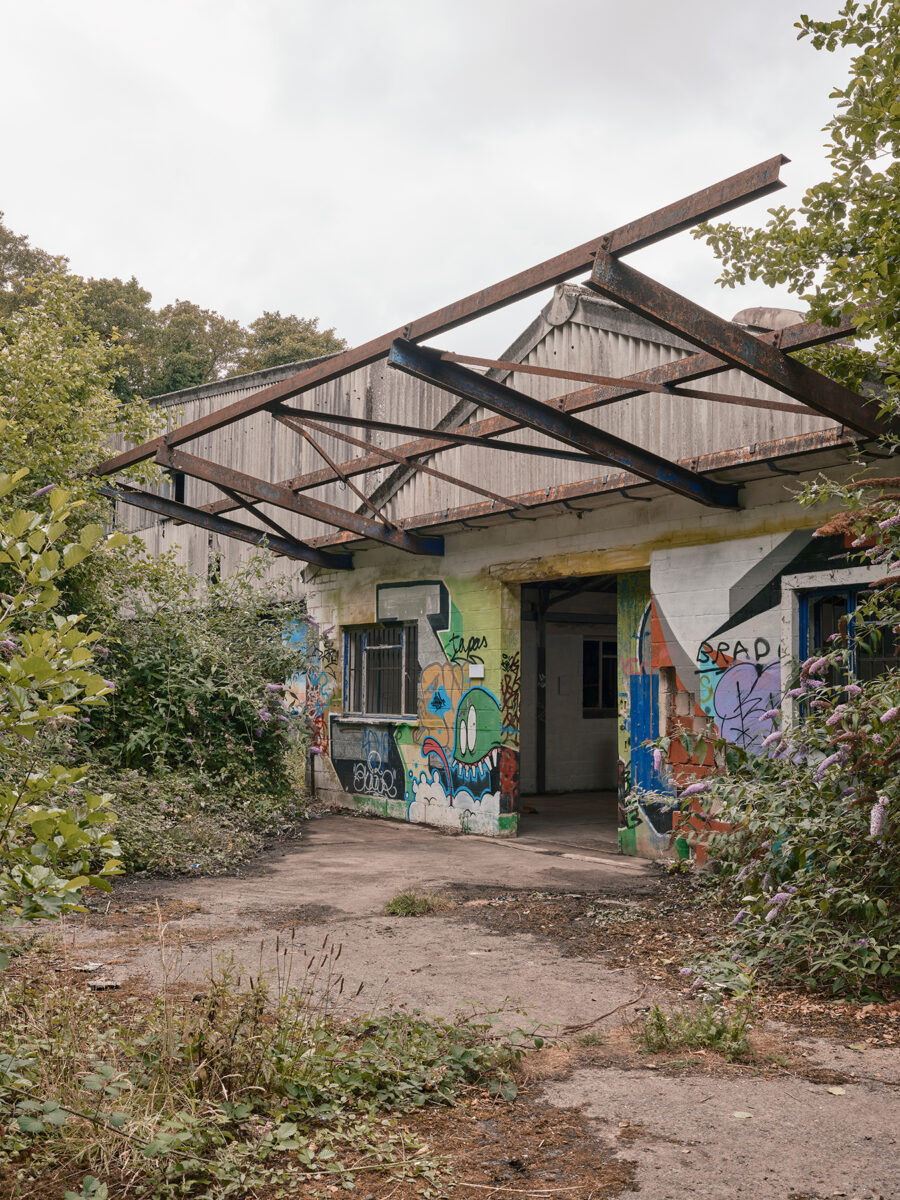
A recent exhibition, conceived as a temporary unsanctioned art space, situated in an abandoned industrial building within an unutilised brownfield site.
The building, Dark Mills, has long been in regular informal use by artists, photographers, skaters and wild swimmers – to the strong disapproval of district officials and the local press. The location of the space and the objects placed within it were intended to raise questions about what vernacular, bottom-up models of development may look like, against the backdrop of certain forms of planning and ‘place making’. Do sites for organic, locally-autonomous construction exist and what would such spaces, free from centralised control, look like?
The exhibition ‘Interim Forms X Future Reality’ is comprised of two parts: ‘Interim Forms’ explores homogeneous utilitarian architecture, represented by the building itself, which erases local distinctiveness, disables communities, and places power in the hands of centralised planning authorities and distant corporations; ‘Future Reality’ imagines new ways of building and living through the incorporation of low-carbon, locally sourced and vernacular building materials and methods that value and encourage community-oriented, symbiotic forms of development, harmonising between the built and natural environment.
Multidisciplinary artist Hannah Walton kindly included a sound piece titled ‘DWTMS-AGORA’ as a response to the site and exhibition theme. DWTMS-AGORA (2022) was developed after encountering a sonic deterrence device in a pedestrian passageway in an estate in Kilburn, London. Such devices emit a high-pitched sound designed to be so distressing that it keeps young people (whose ears are more sensitive to higher sounds) away from the site in which it is installed. The sound piece is a reaction to the way in which such devices discourage exploration and curiosity within public and semi-private spaces within our communities.
The selection of photographs and text provide a overview of the site at Dark Mills, its proximity to nature and its many spaces including the loading bay and boiler house in which the exhibition was curated.
Photos © Luca Piffaretti
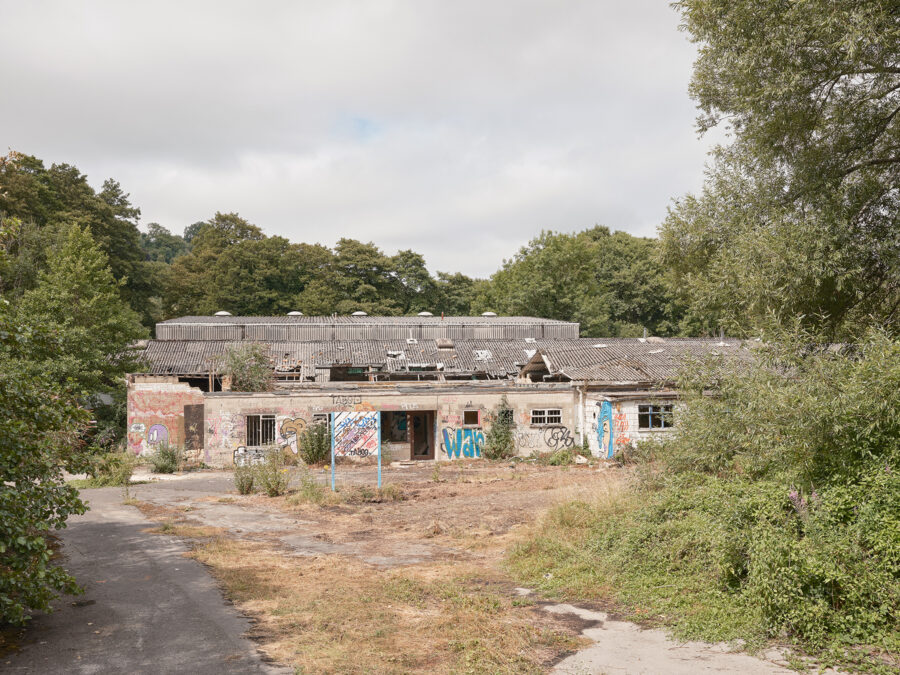
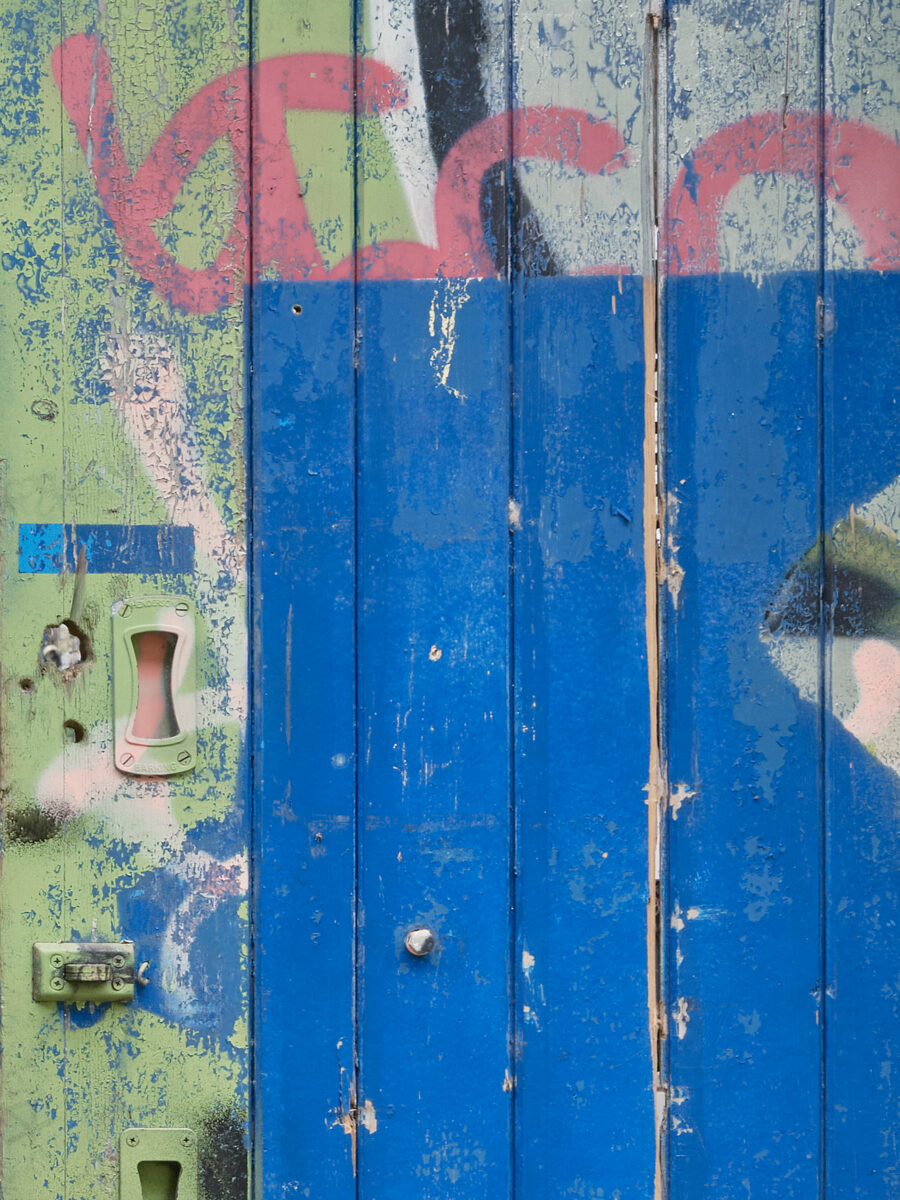
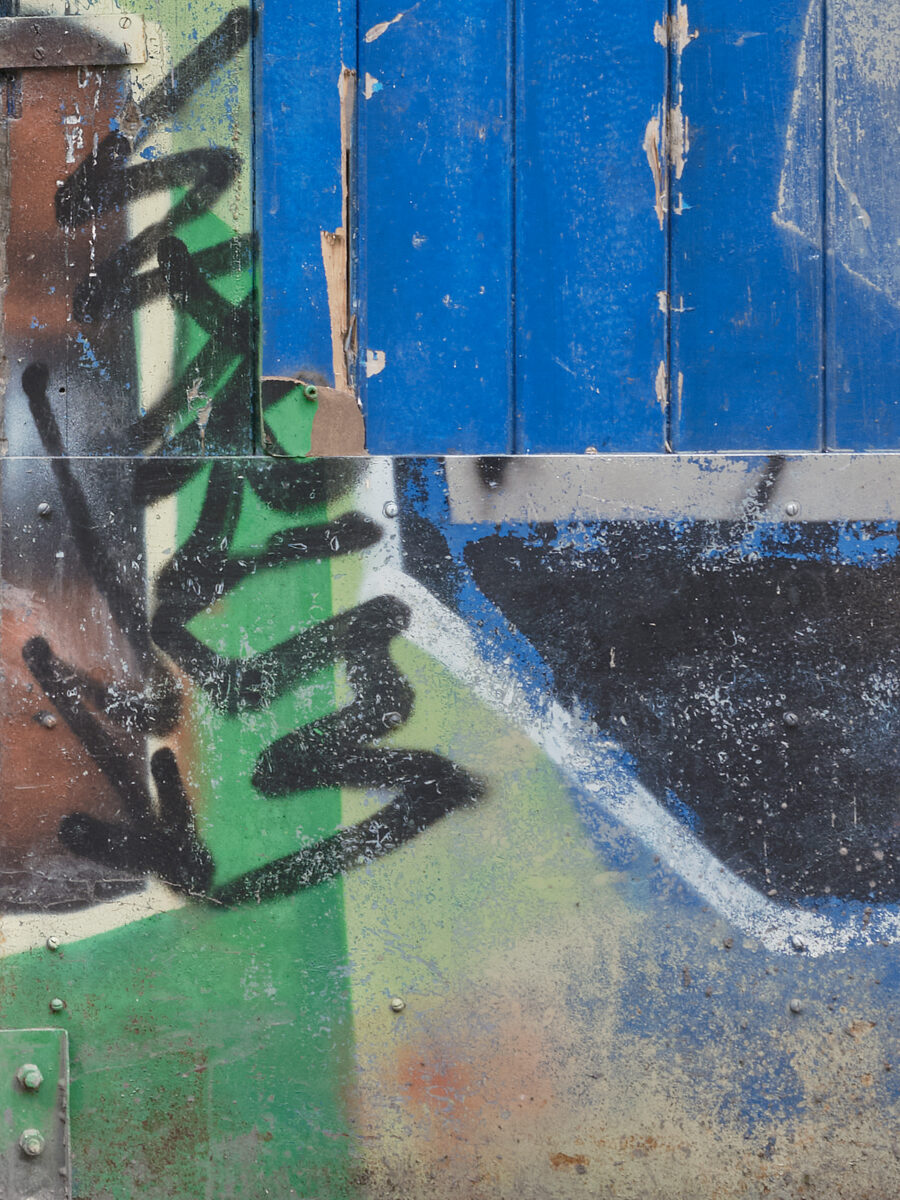
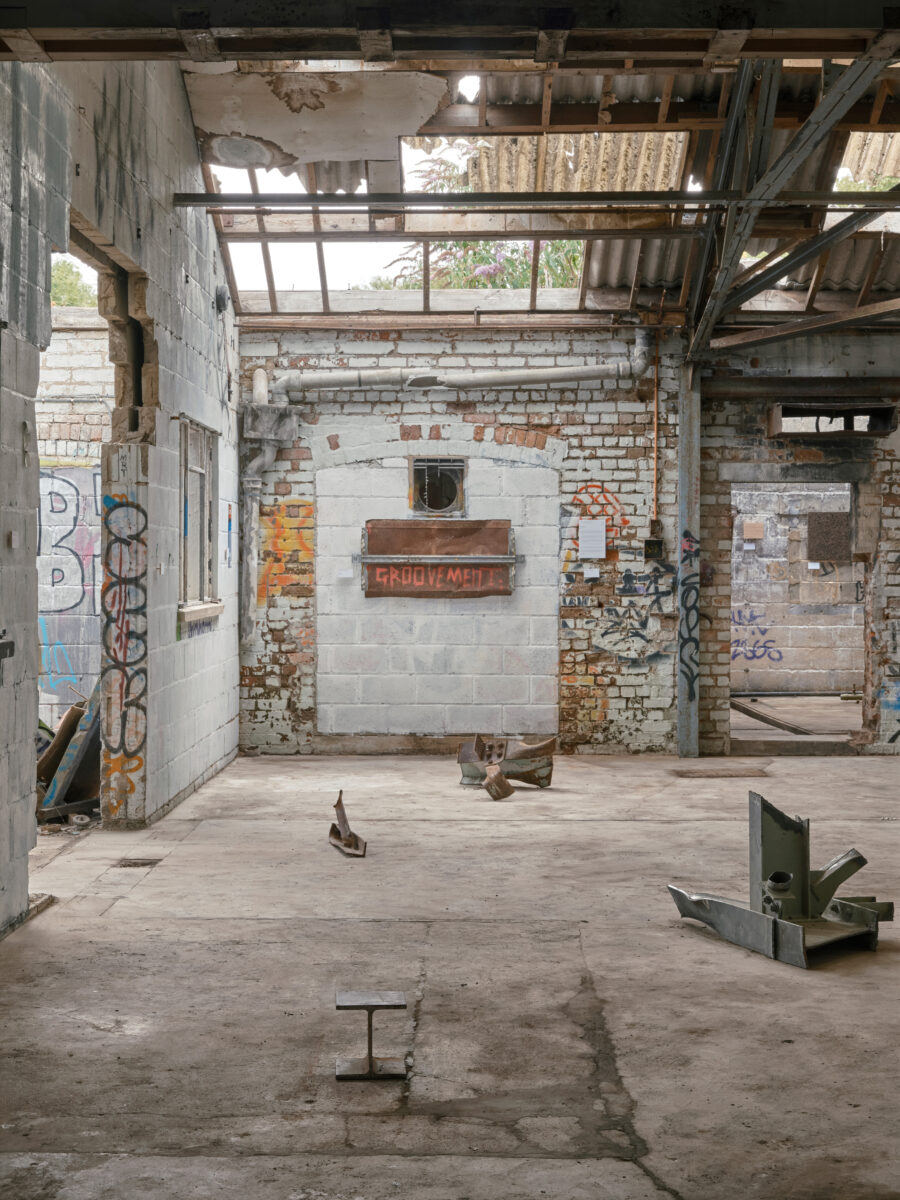
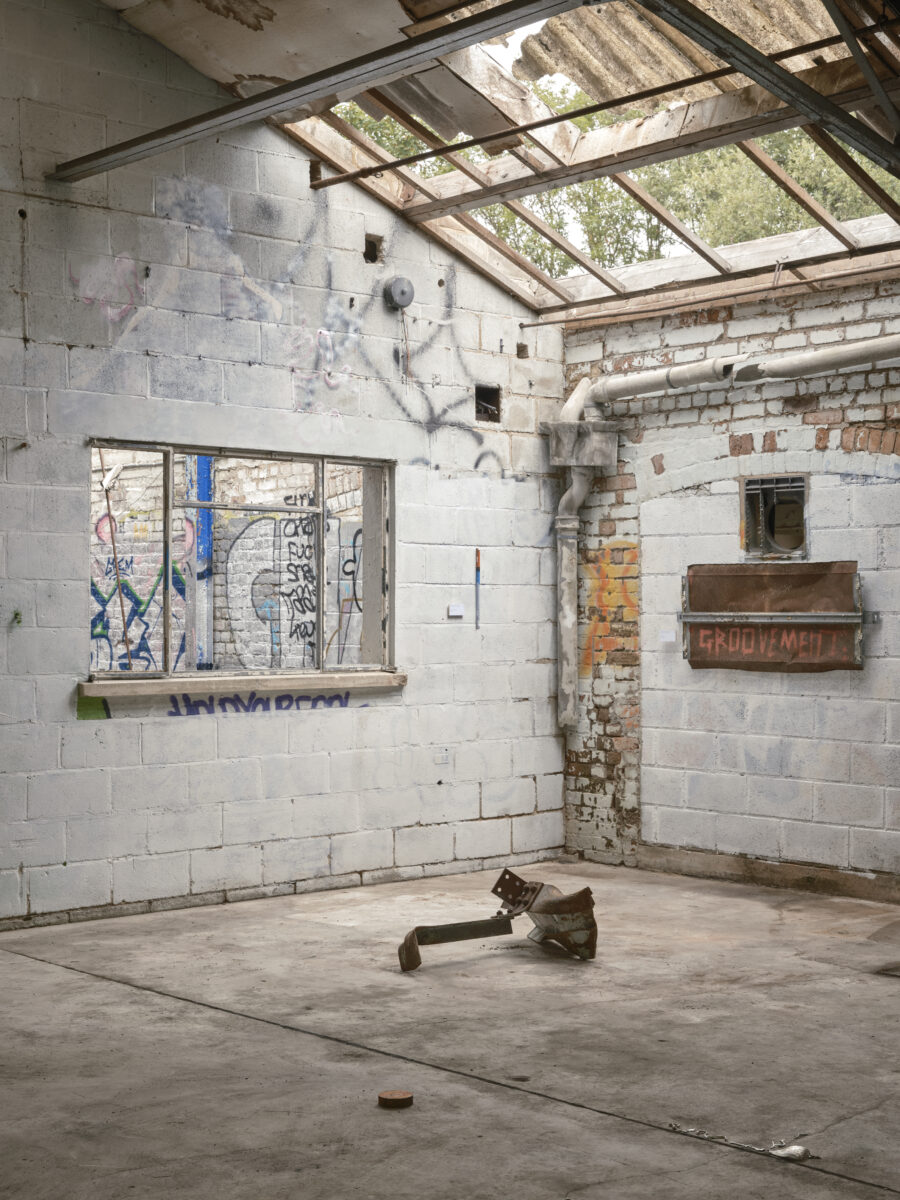
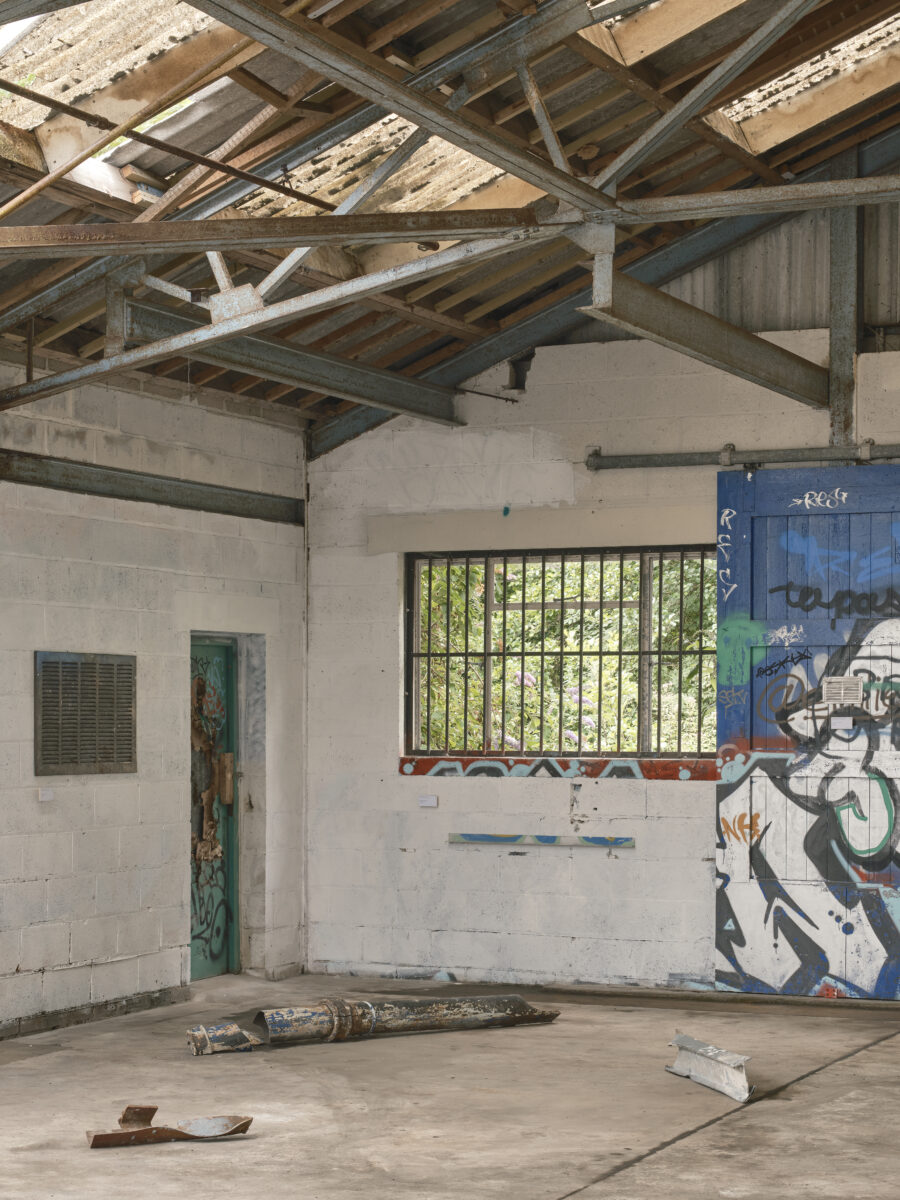
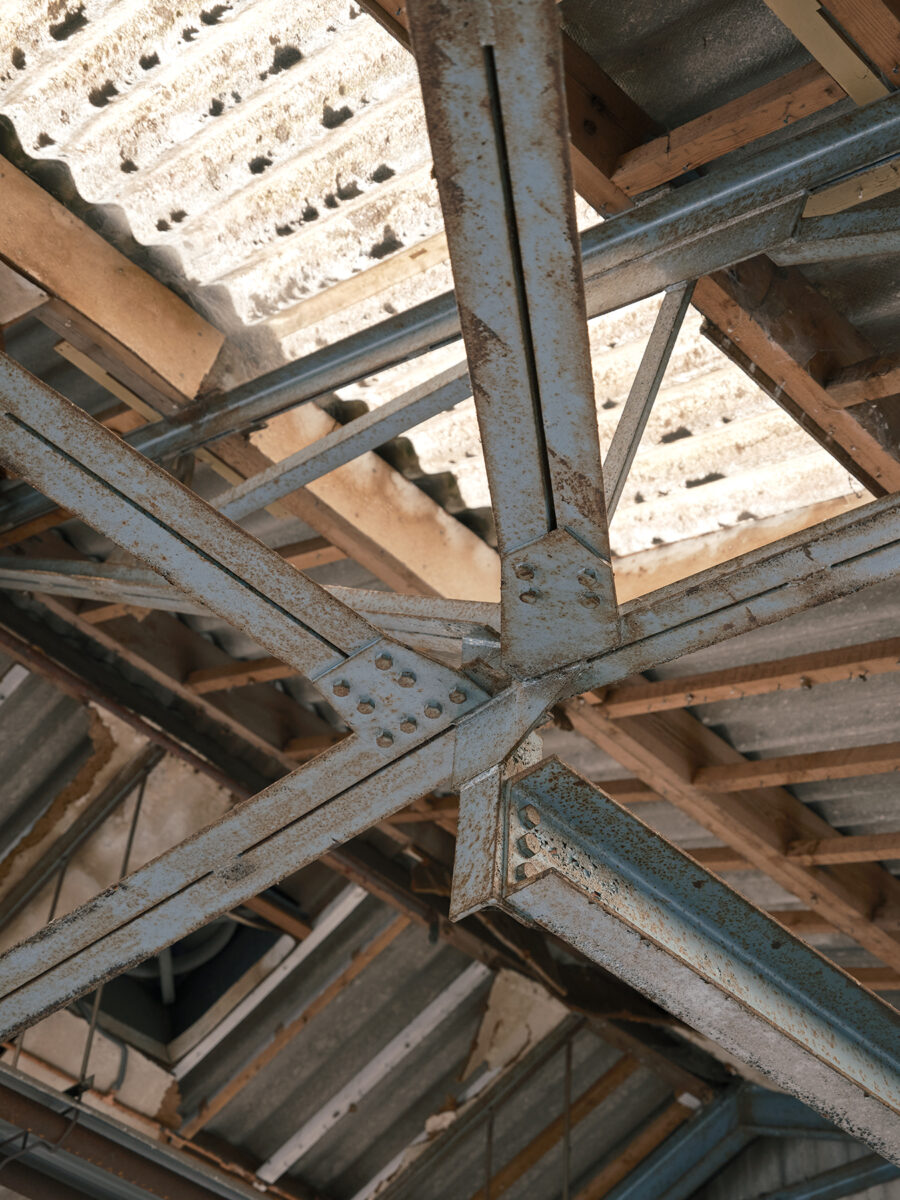
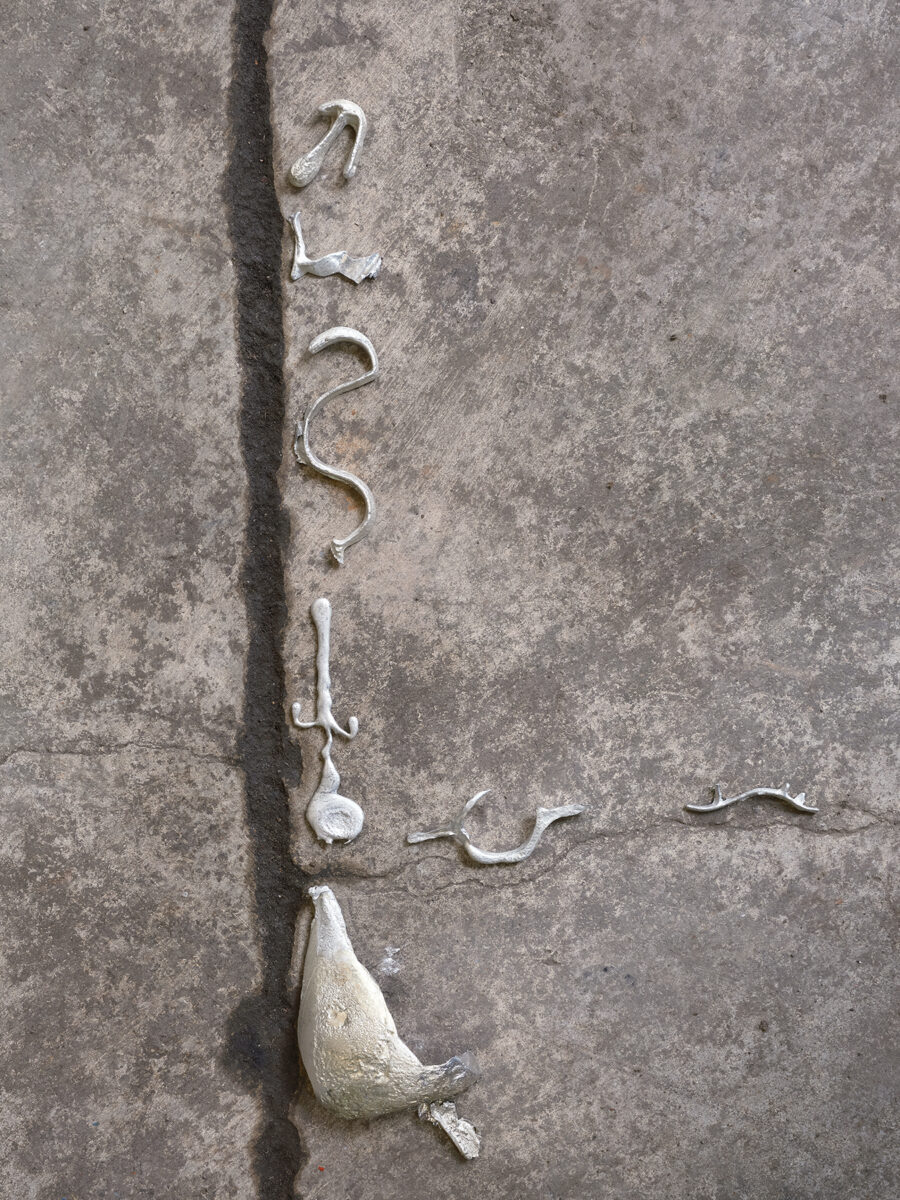
INTERIM FORMS
‘Interim Forms’ is an ongoing research project by Assorted Studio; a growing collection of found objects relating to the built environment, displayed within the loading bay of the site.
This selection of twisted steel girders, crunched-up I-beams, trusses and structural components were taken from a recently demolished industrial site in the area, and reminds us of how buildings and developments are routinely processed: an extremely carbon-intense model, first in the production of materials such as steel and concrete, and then the energy cost of processing, refining, melting-down and re-forming. Recycling buildings is, in most cases, vastly more sustainable, yet ‘demolish and rebuild’ remains the default approach.
The Dark Mills site has longstanding planning permission for 36 ‘flats maisonettes and houses for persons aged 50 years and over’ but has remained derelict for many years as developers await the optimum time to capitalise on their investment. Industrial buildings on adjacent land have recently been razed to make way for new housing to meet the requirements of Stroud District Council’s Development Plan, and it is likely that this building will also soon be demolished.
Do such projects, planned centrally without any input from their intended residents, allow for meaningful dwelling and the creation of genuine communities? The Dark Mills scheme will provide units for the storage of older people no longer of use to the market, dissecting the social body and exacerbating loneliness and helplessness. The development will have no living, convivial centre and its residents will depend on cars to transport them to and from distant sites of economic activity.
New buildings do not have to be ugly or of low quality, but modern planning systems and construction methods seem primarily concerned with economic benefit to the developers, as opposed to the wellbeing of the community. Standardisation and centralised planning results in soulless, utilitarian design; little boxes made of ticky-tacky which do not meet the spiritual or social needs of the community.
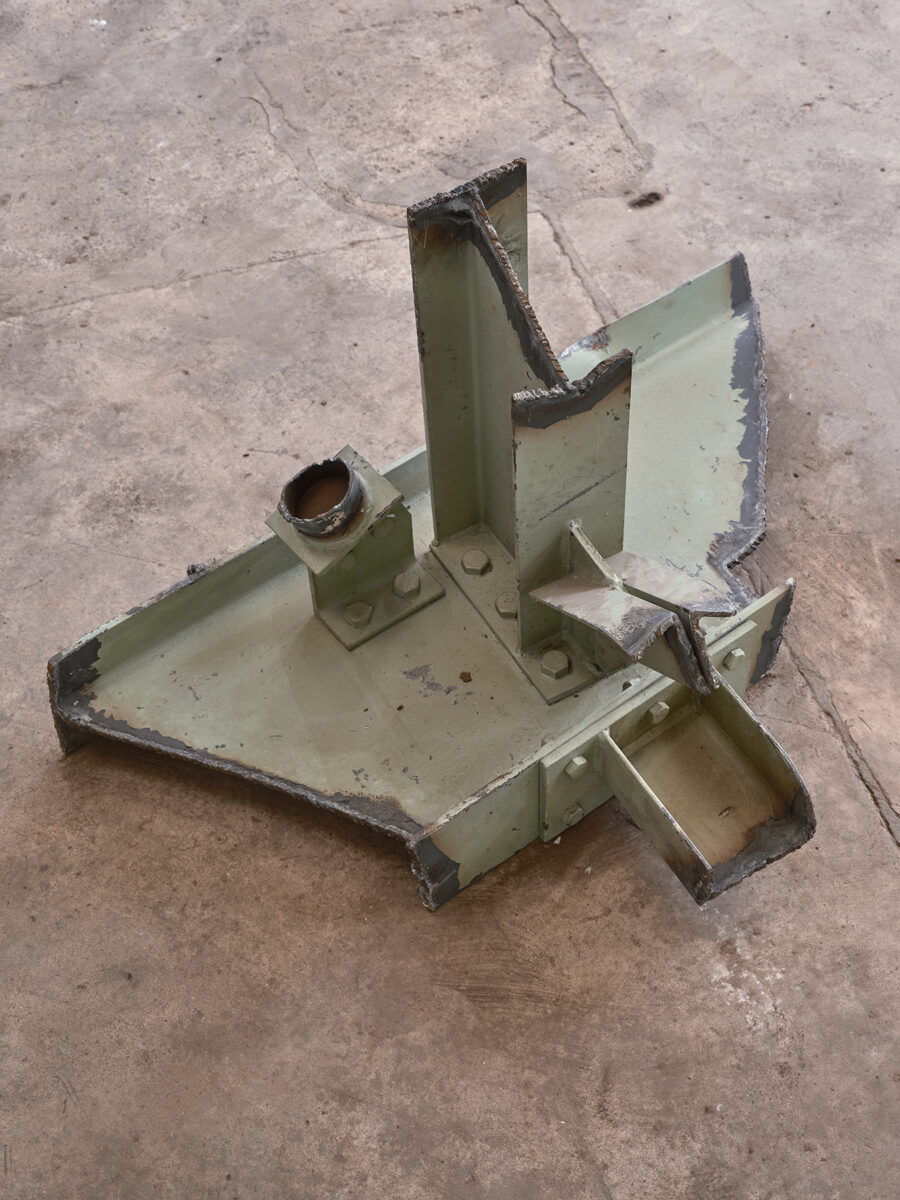
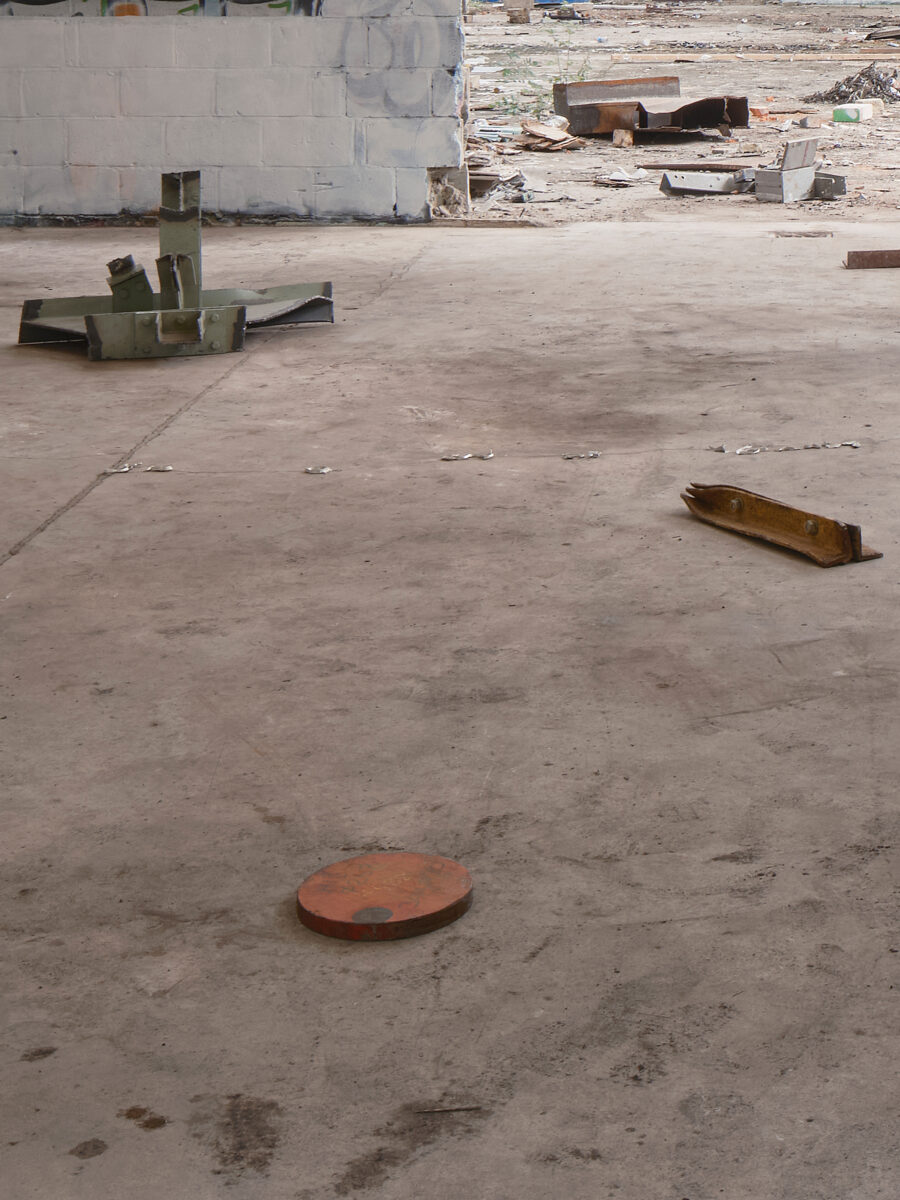
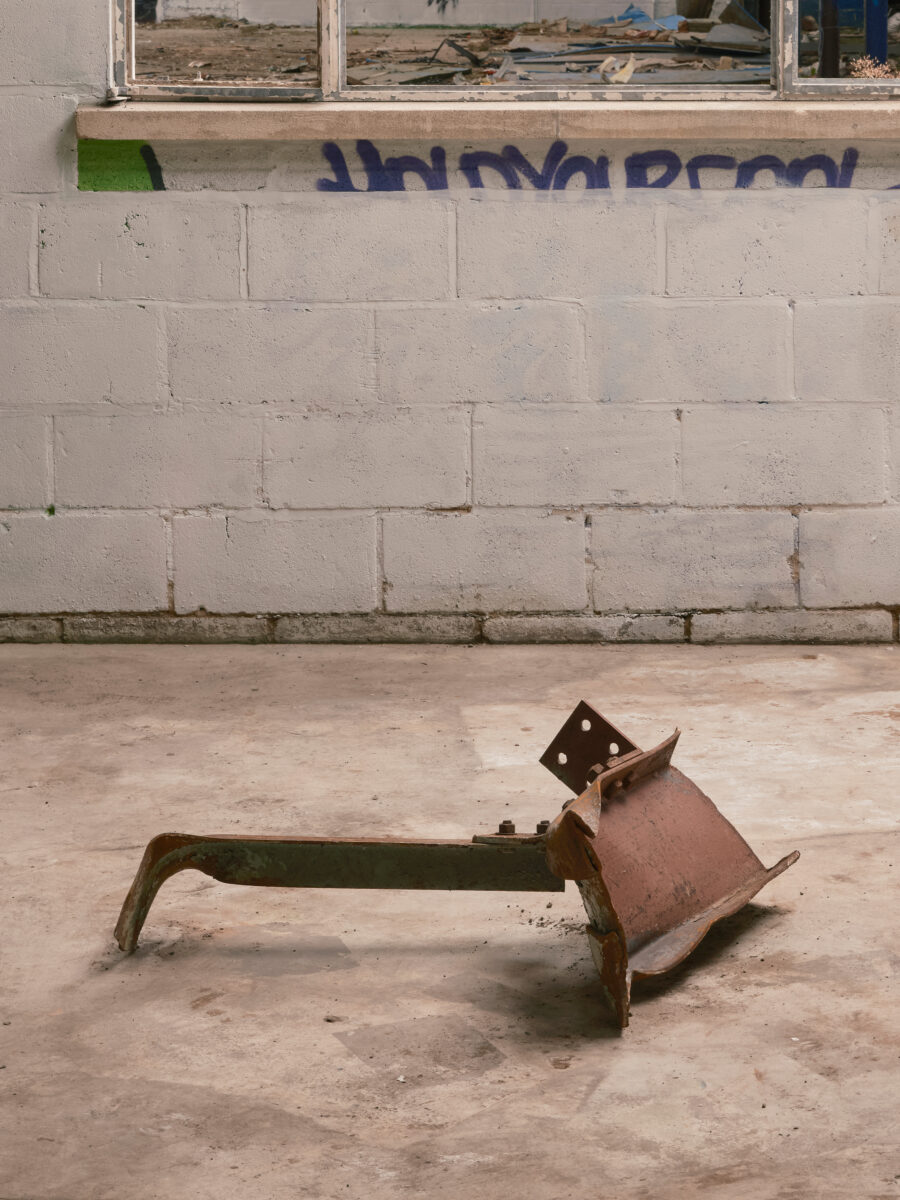
FUTURE REALITY
The following collection of materials – exhibited within the boiler room of the site – points to different approaches to development, through which the natural and built environment could be effectively managed for the benefit of all.
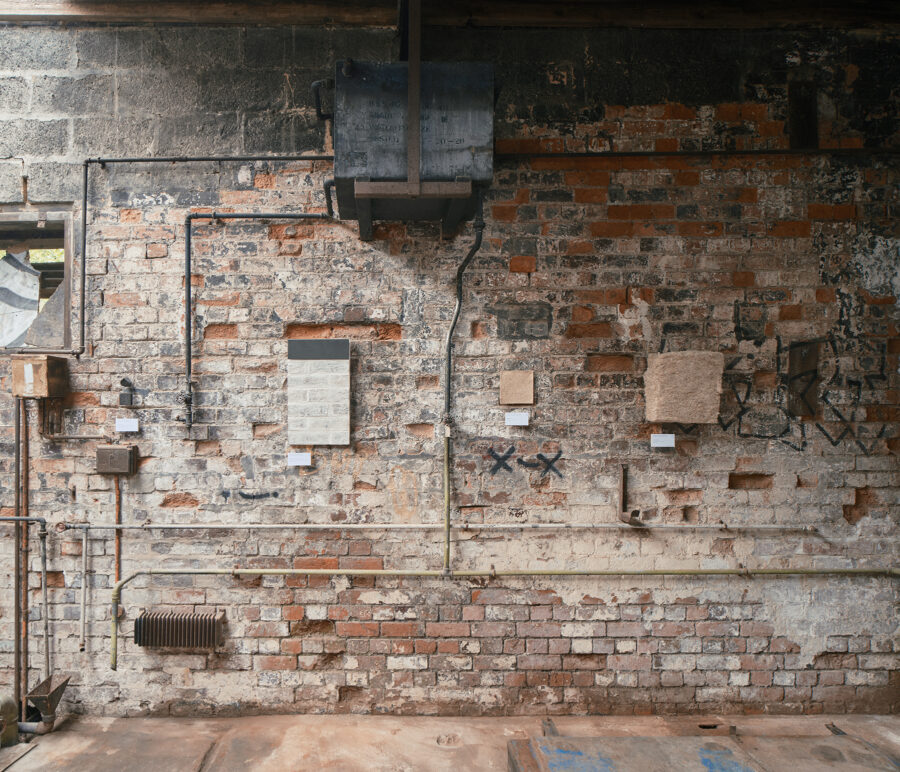
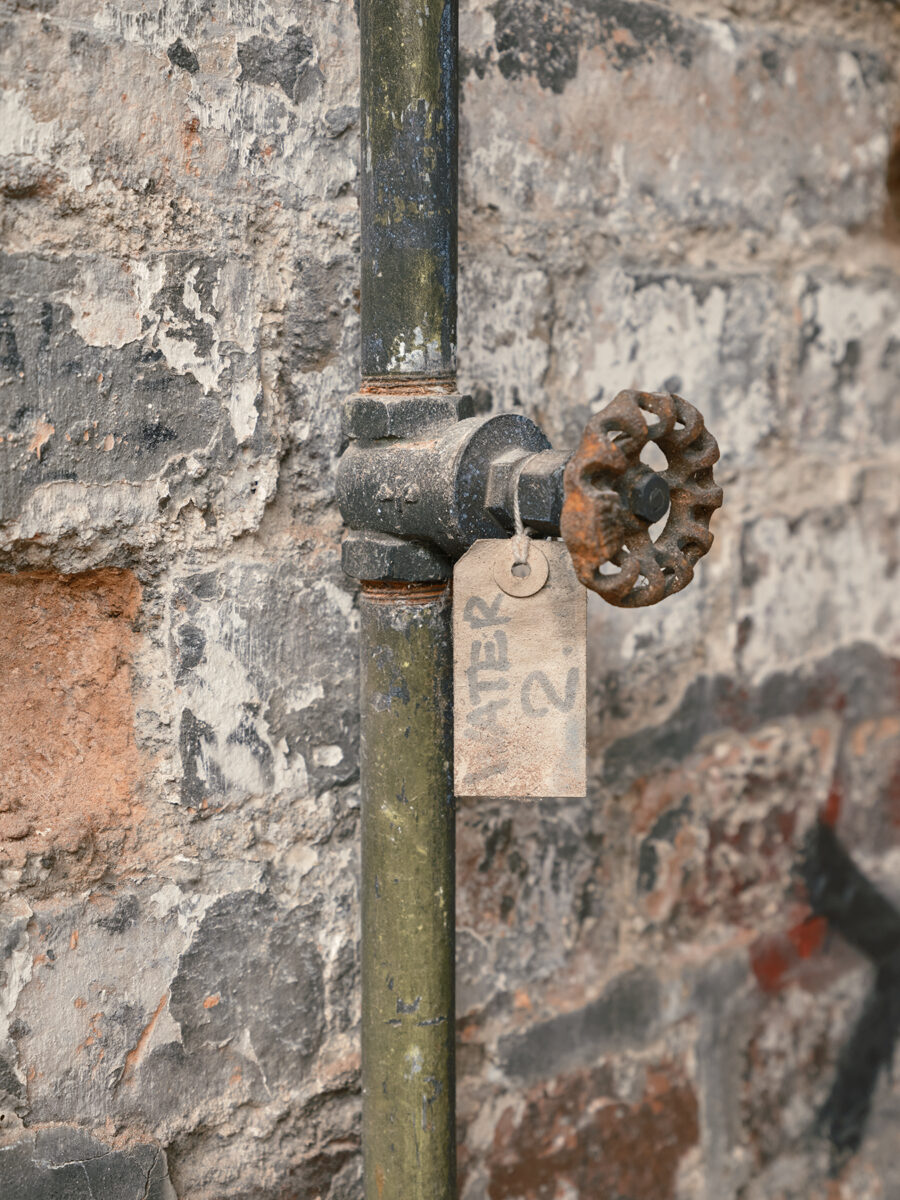
What might be termed ‘appropriate architecture’ would empower individuals and communities to create constantly evolving spaces for genuine dwelling – rather than mere residing – in accordance with the specific cultural, economic and social needs of the area.
Such developments would not be entirely reliant on gigantic global supply networks but would instead use locally-sourced components. Appropriate architecture would favour enduring natural materials in harmony with the character and vernacular style of the region. Construction problems typically solved through high-energy industrial means would instead be resolved using vernacular techniques accessible to non-professionals.
Crucially, centrally controlled one-size-fits-all development would give way to organic, locally-led projects which would centre the needs of the community and heal disjointed social relations.
The below selection of materials represent some of the many processes and applications available within the construction industry. All of these have the potential to influence a move towards more autonomous, decentralised models based on local, renewable sources of production.
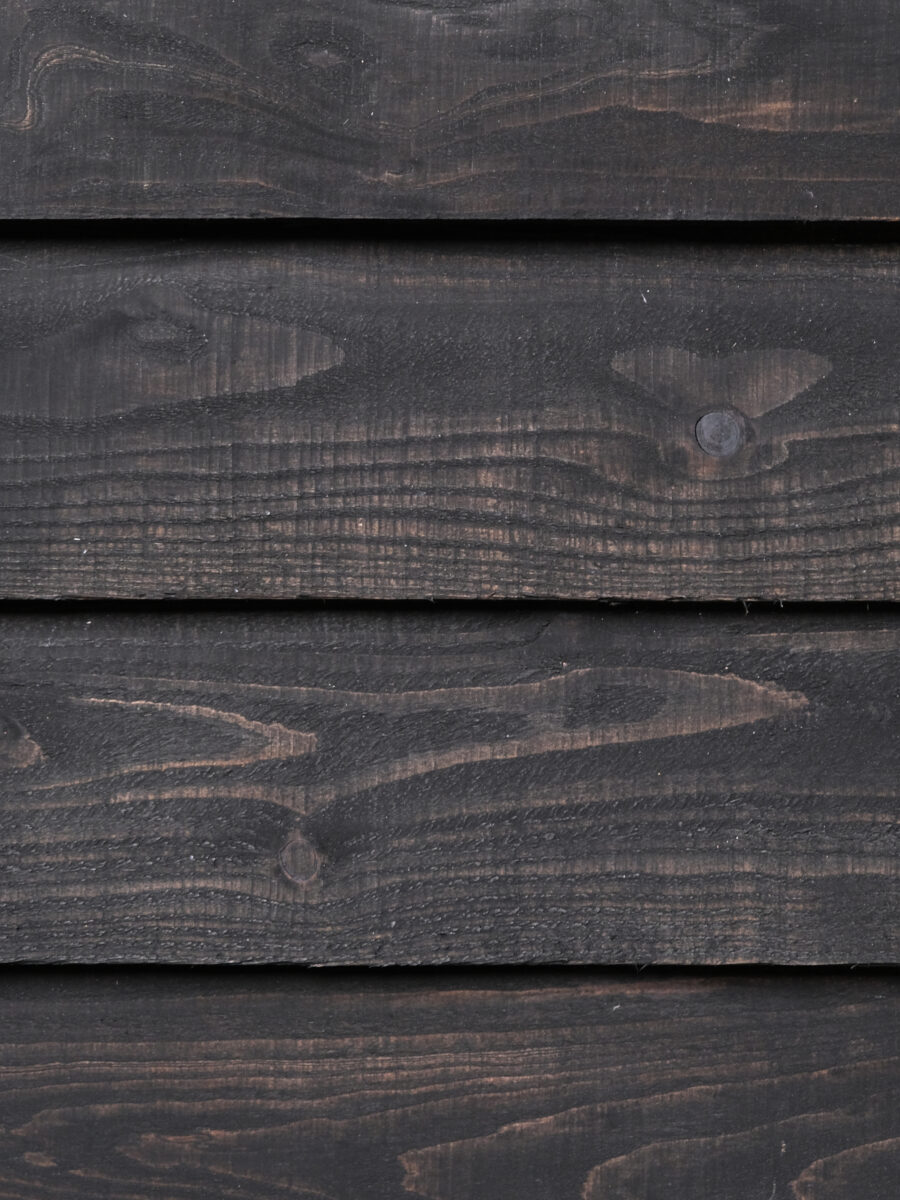
UK-sourced larch cladding with a natural charcoal wash
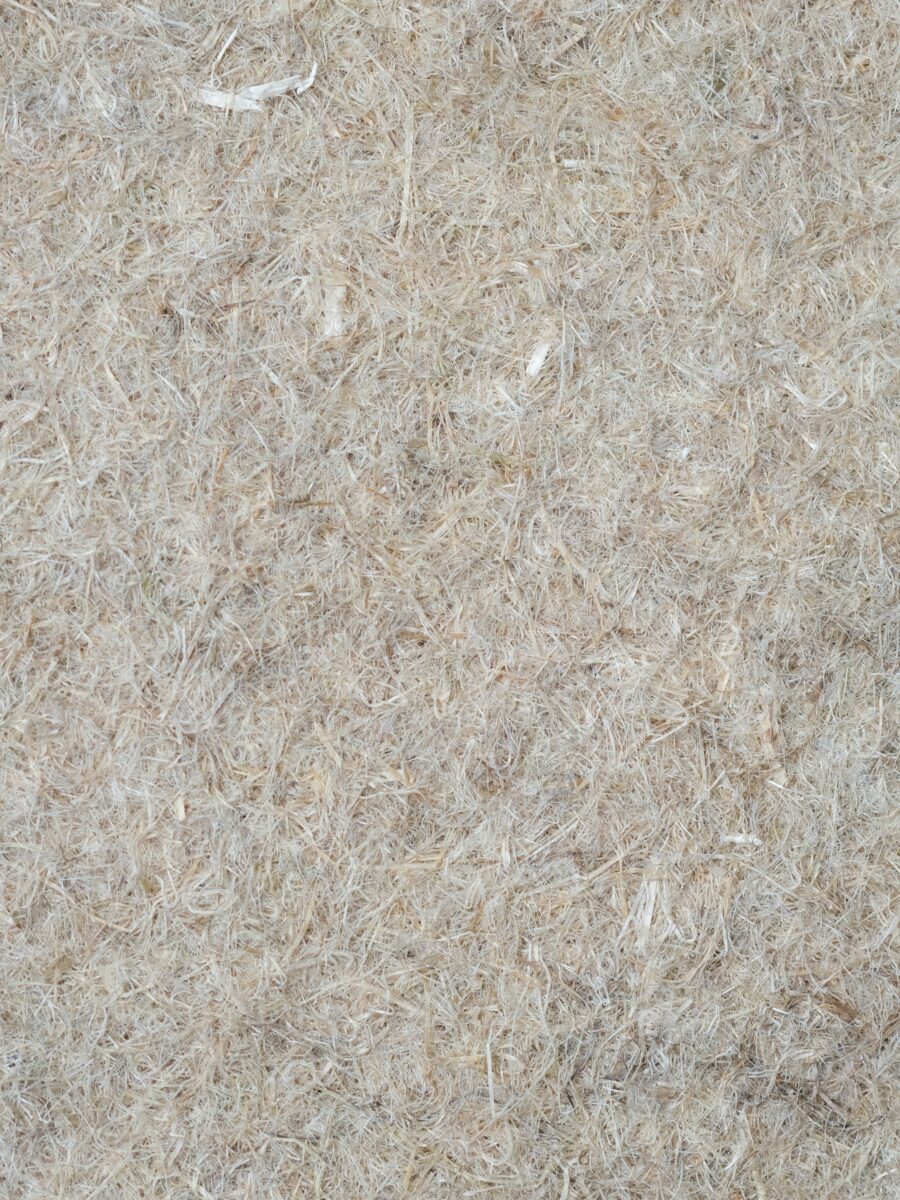
UK-sourced hemp felt supplied by Hemspan
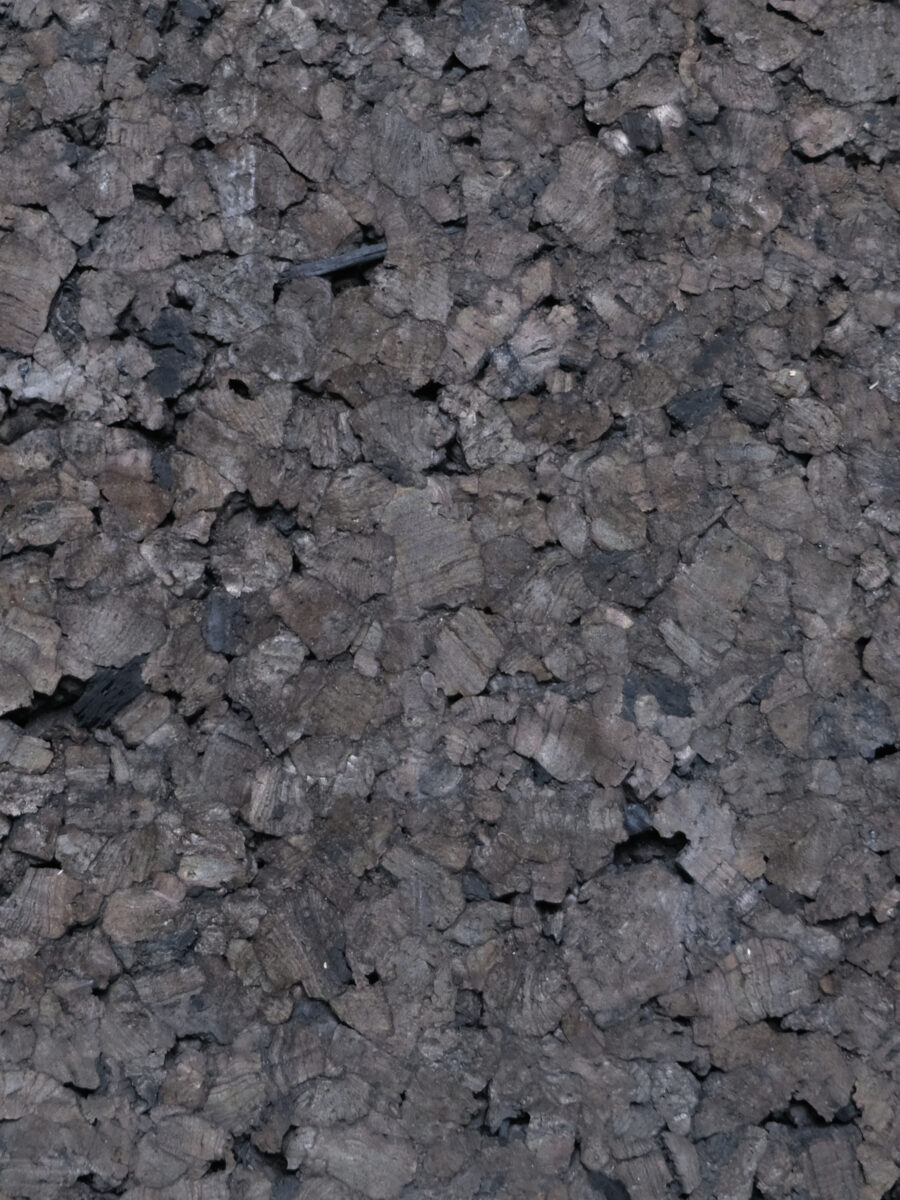
Natural cork insulation board supplied by Ty-Mawr

Handmade weathered brick and lime mortar
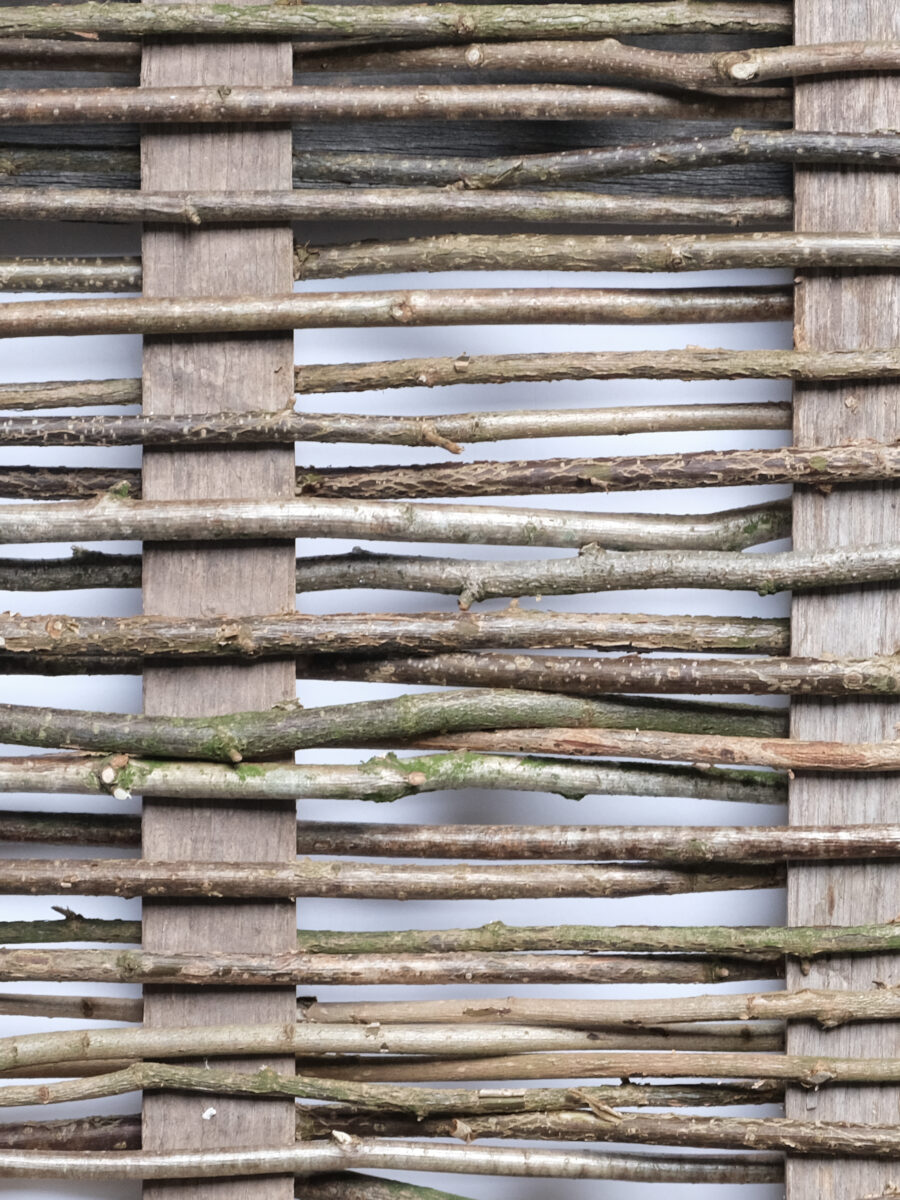
Wattle panel made from UK-sourced lath and hazel
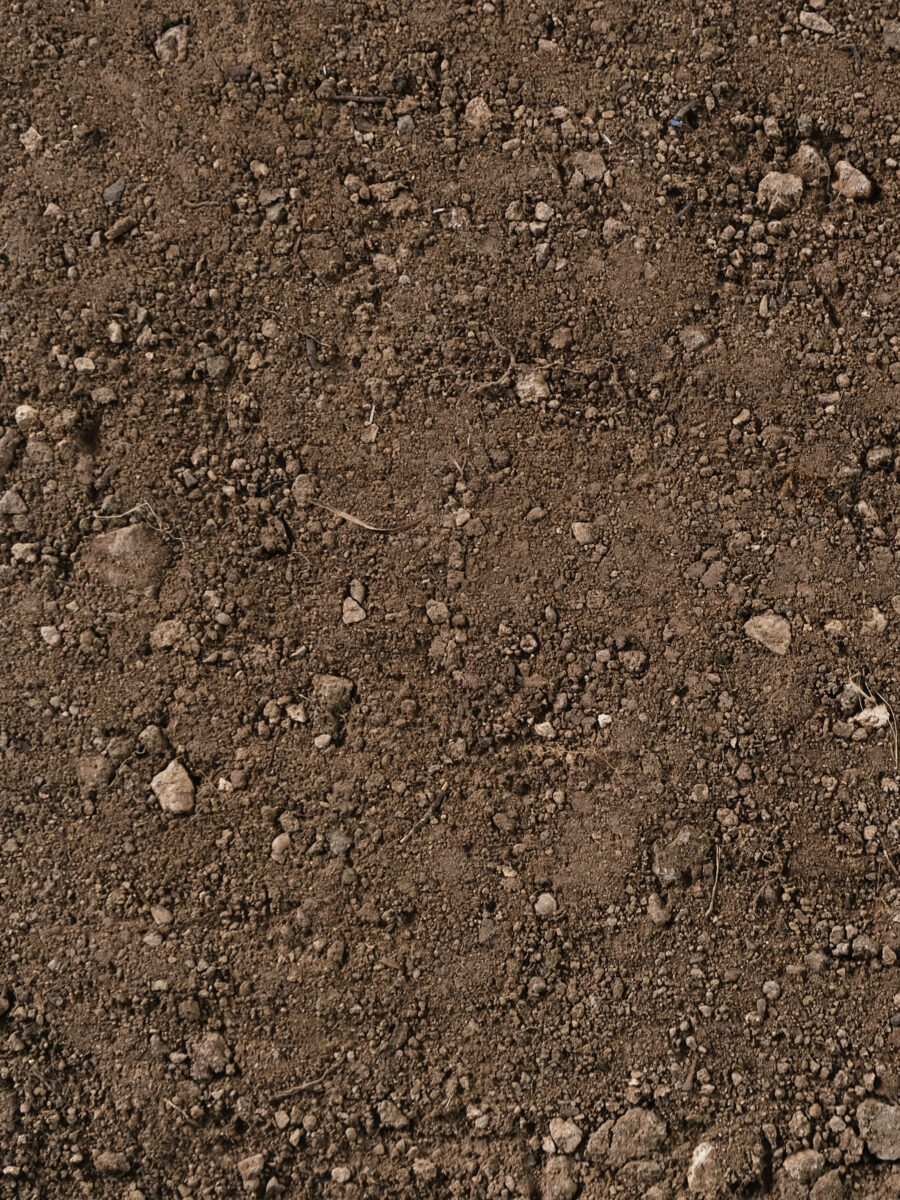
Formed earth panel
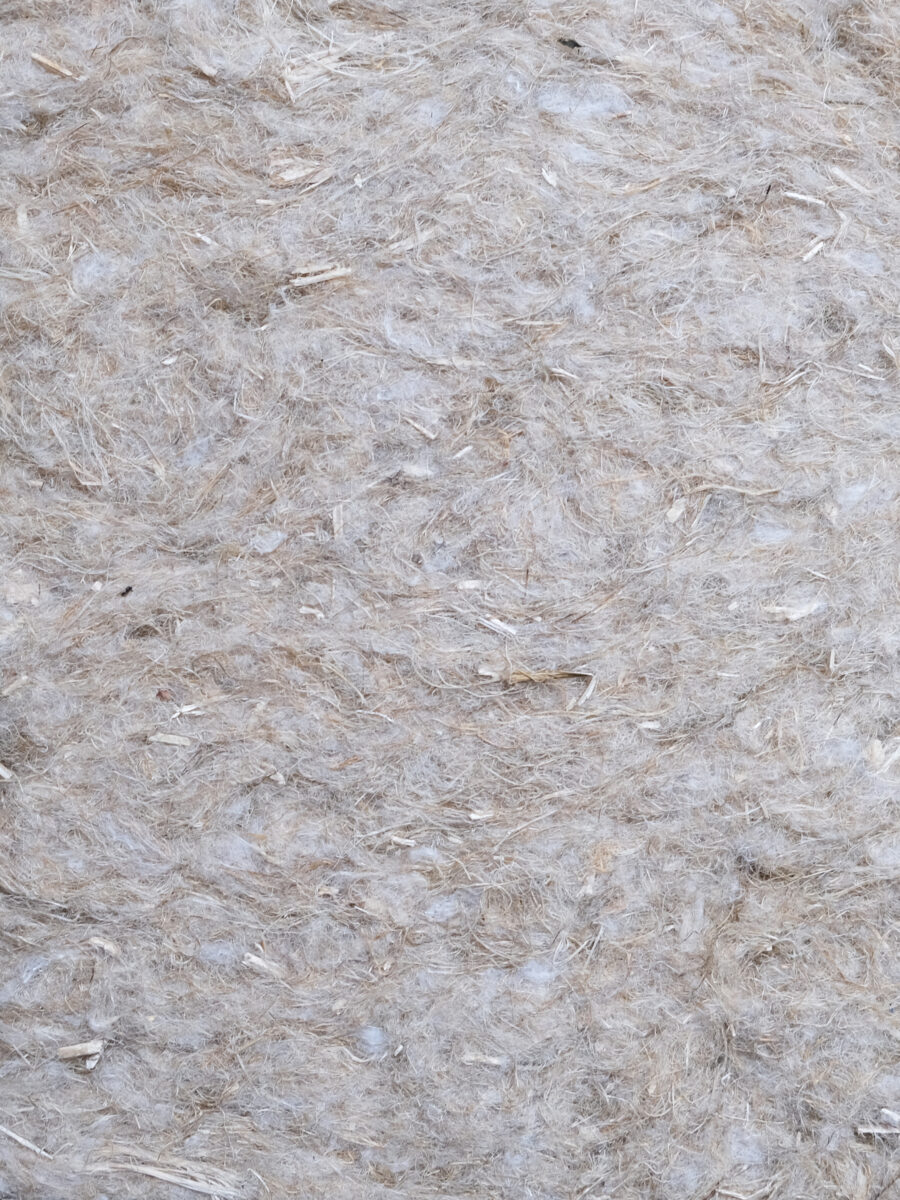
BioFlex UK-sourced hemp insulation supplied by Hemspan
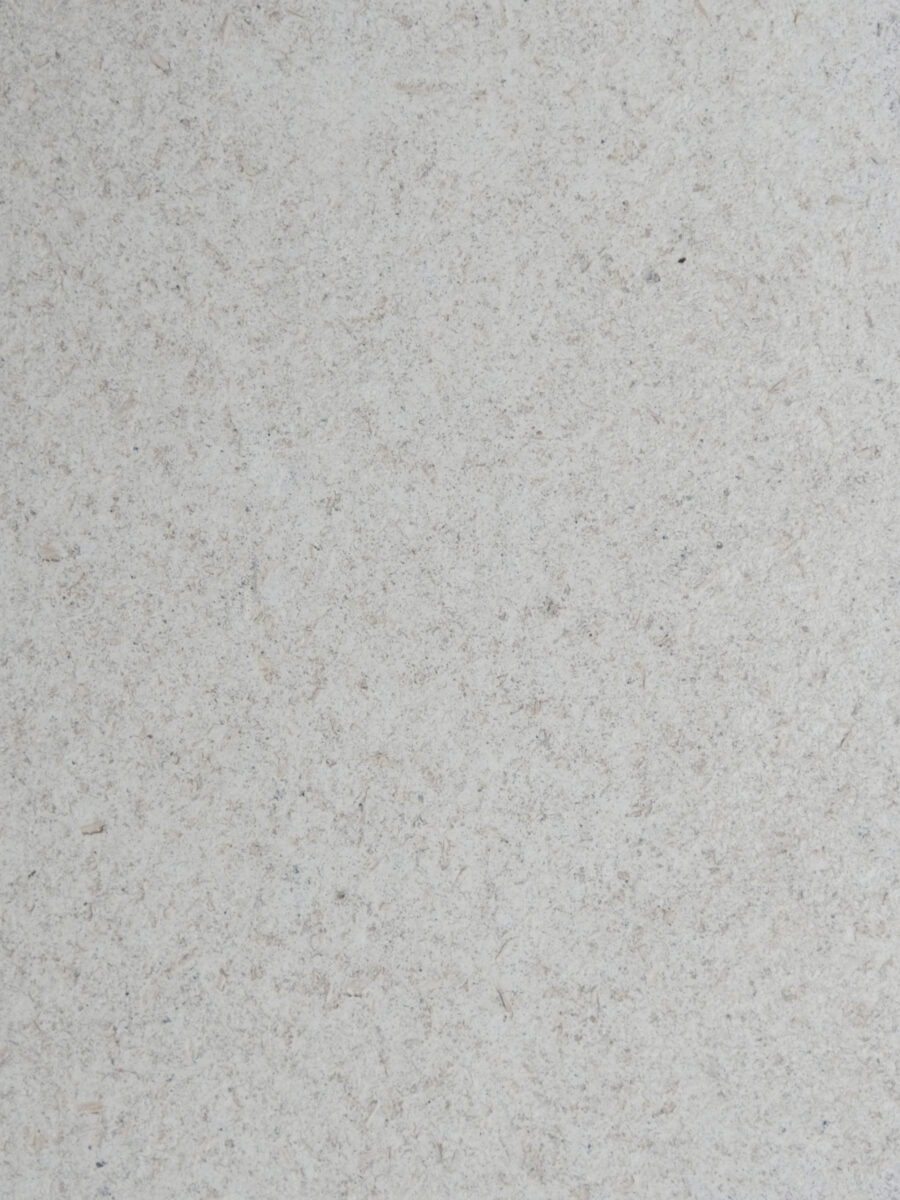
Wood wool board and fine hemp plaster supplied by Ty-Mawr
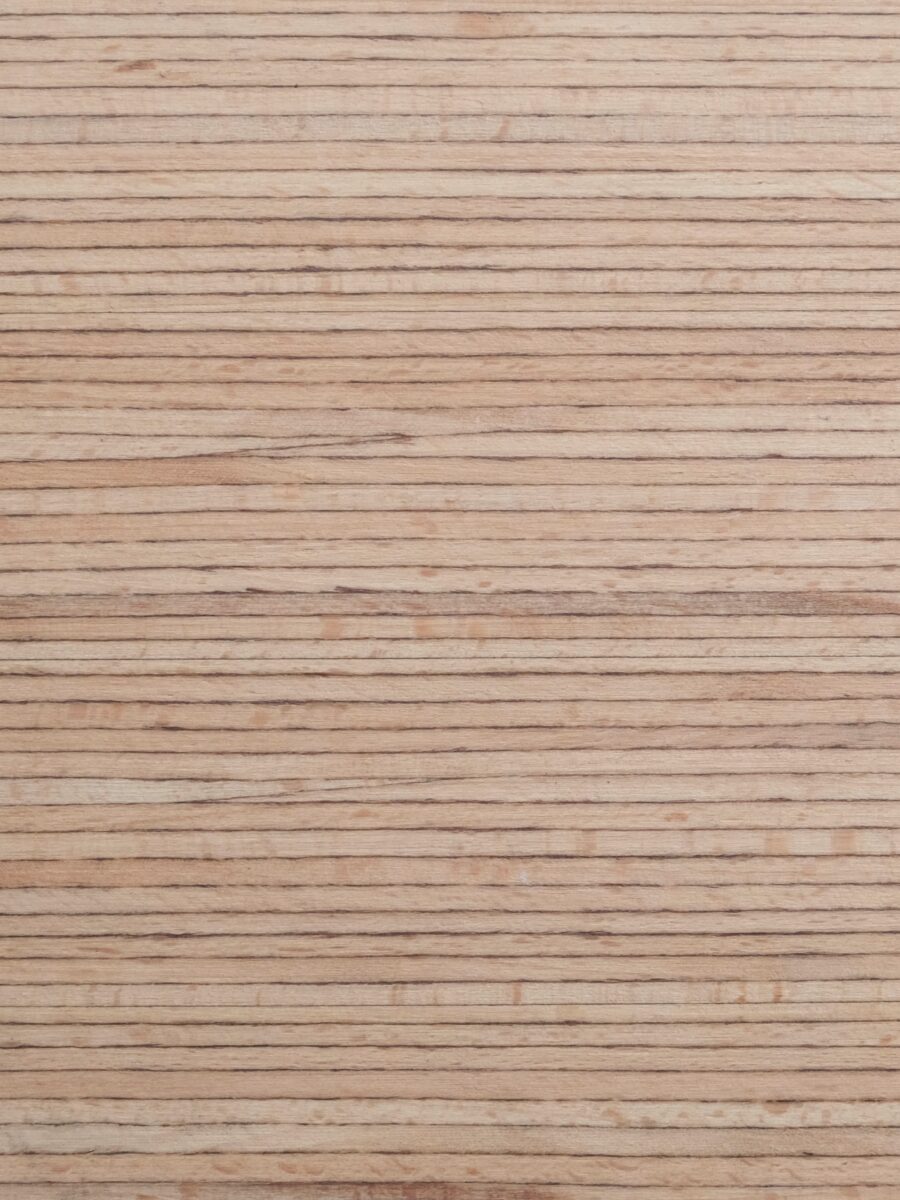
Baubuche cross laminated timber panel
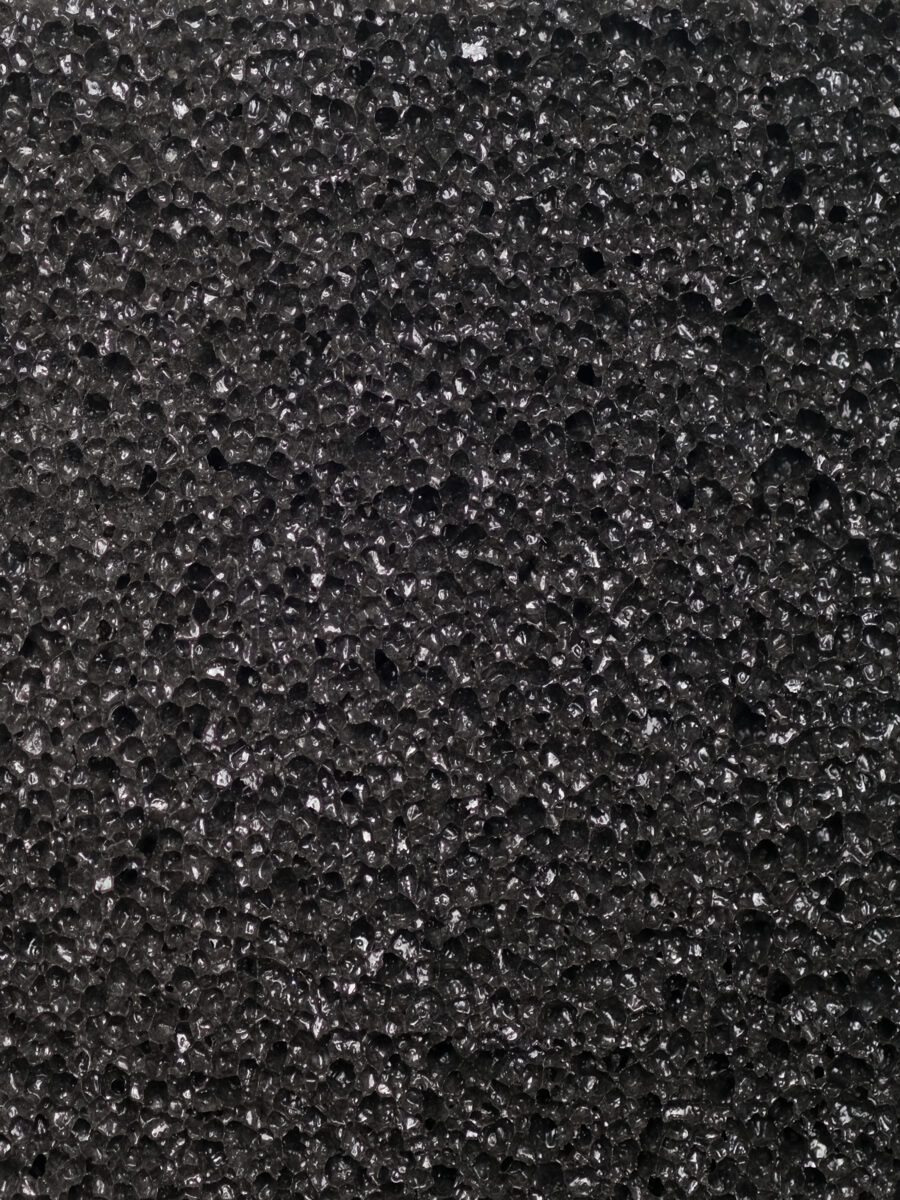
Glapor 100% recycled cellular glass insulation supplied by Ty-Mawr
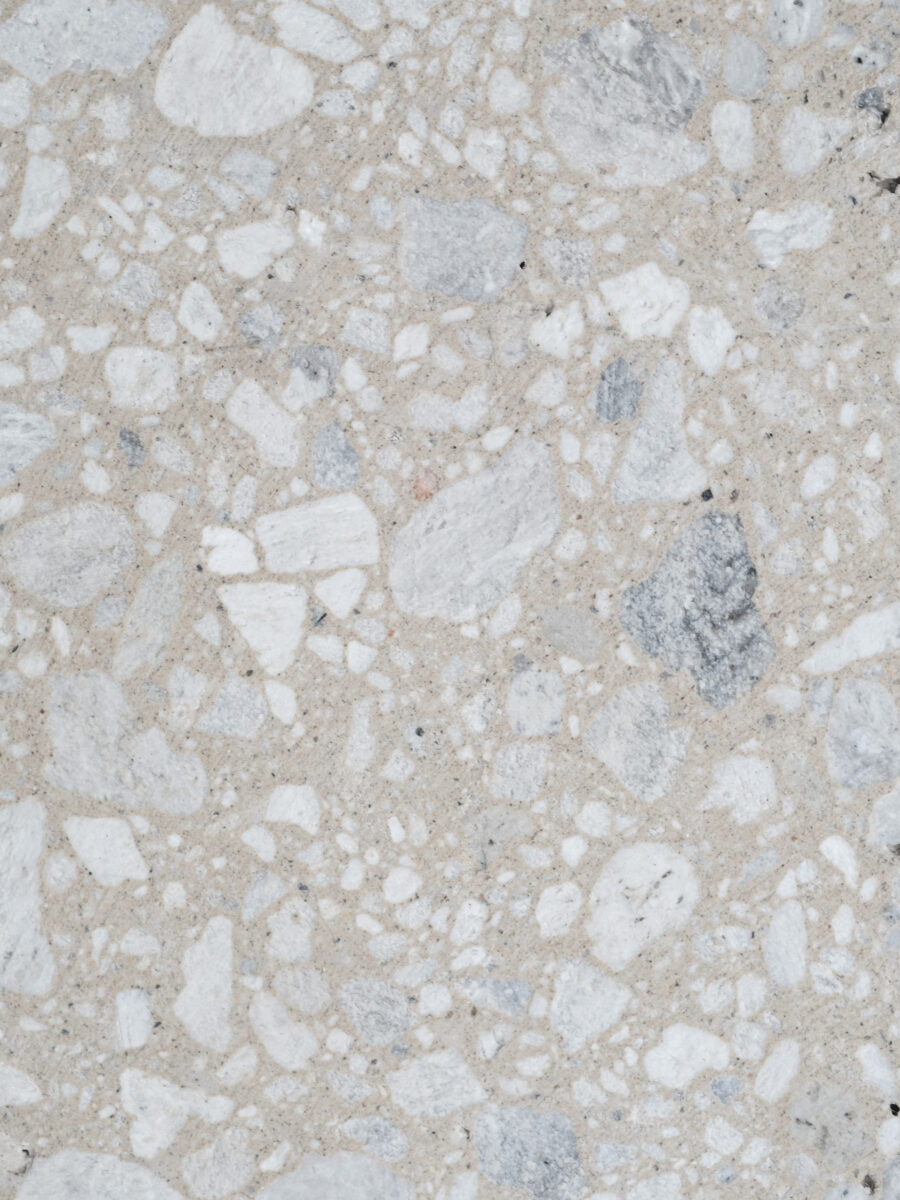
Pumice terrazzo floor system supplied by Ty-Mawr
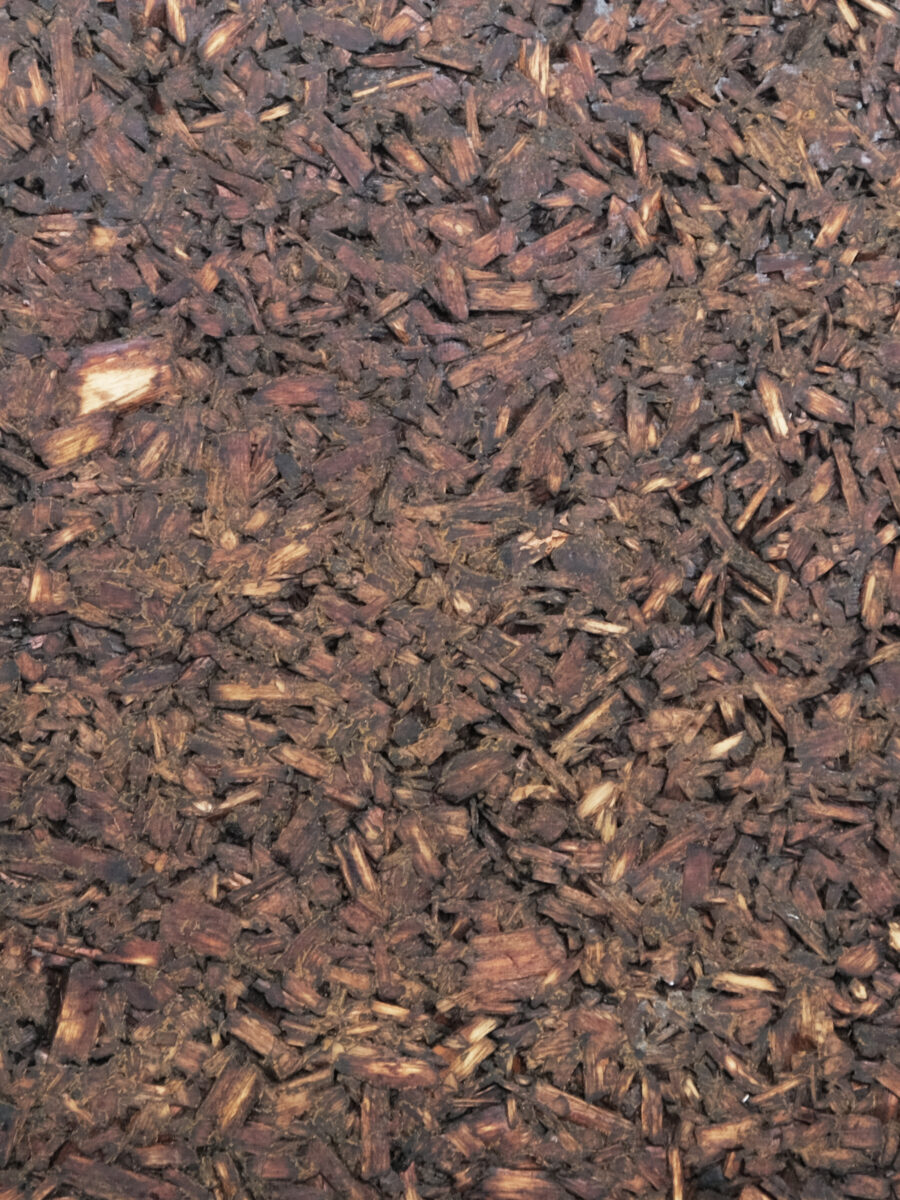
UK-sourced hemp shiv and bio resin panel supplied by Hemspan
–
Thank you to all those who contributed to the exhibition through material donations, conversations, advice, research, writing, lifting, painting and printing – Oliver, Harry, Mr Johnson & Co, Amir, Hannah, Nick, Nancy, Tom, Nigel, Jack, Andy, Caspar, Clare, Michael, Dane and DFC as well as key suppliers Hailey Wood Sawmill, Chalford Building Supplies, Hemspan, Mike Wye, Bespoke Brick and Ty-Mawr.
Steam Sauna
Conceived as an enclosed space for gathering where the elemental is emphasised. Earth, fire, water, steam..offering a calm intensity, insulated against the outside. Designed as a kit of parts, it is easily demountable and transportable and is multifunctional in use. Images produced in collaboration with Maciej Szczygielski.




Villa in Granada
Working alongside Halard Halard and Ignacio Quemada Architects in the development of a private villa in Granada, Spain. The project saw the amalgamation and reconfiguration of four existing townhouses over multiple levels into a single, labyrinth-like dwelling with multiple courtyards and terraces. Involvement included the production of architectural and interior packages including material specification, fixtures and finishes, furniture, lighting and bespoke joinery design. Photographs by Inna Kostukovsky / Assorted Studio.













Ladbroke Grove
Planning approval has been received for the extension and renovation of a mid-terrace property in the Oxford Gardens Conservation Area, Royal Borough of Kensington and Chelsea. The scheme aims to open up the existing ground floor area of the family home, improving circulation and the efficiency of the property as a whole.
Rear iso and external material palette showing whitewashed handmade brick and zinc parapet roof detail.


Interim Forms
Interim Forms is an evolving body of research, consisting of an ever evolving library of materials, prototypes and fabricated elements that inform built and non-built projects. It functions as an experimental platform through which to explore responses to historic and contemporary trends of development within the built environment, processing information surrounding the design and procurement of buildings in relation to place and community.
@interimforms





Unstable City Think Tank
Resilient systems for city development. The very processes that make London one of the most dynamic and exciting places in the world also generate social, political, environmental and economic instability. The think tank, part of studies whilst at the London School of Architecture explored resilient and responsive approaches in city making in order to understand, design and manage the evolutionary balance of London in face of the pressures of the next 25-50 years.
Think Tank Collaborators:
AHMM, Buro Happold, Citizen’s Design Bureau, Grimshaw Architects, Marko and Placemakers, Scott Brownrigg, Studio Egret West, Alaric Campbell-Garratt, Oscar Hårleman, Phelan Heinsohn, Petra Marko, Duncan McNaughton, Fearghal Moran, Dawa Pratten, Aleks Stojakovic, Paolo Vimercati
www.the-lsa.org
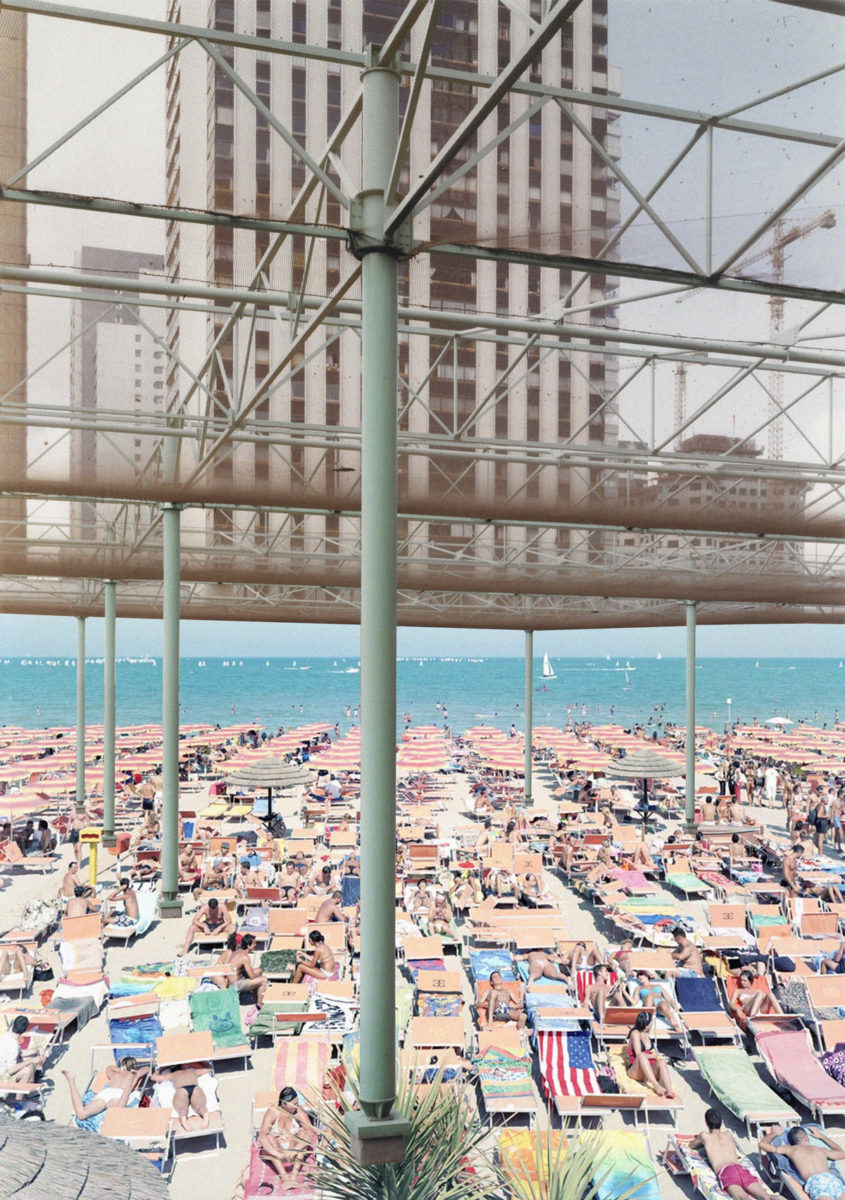
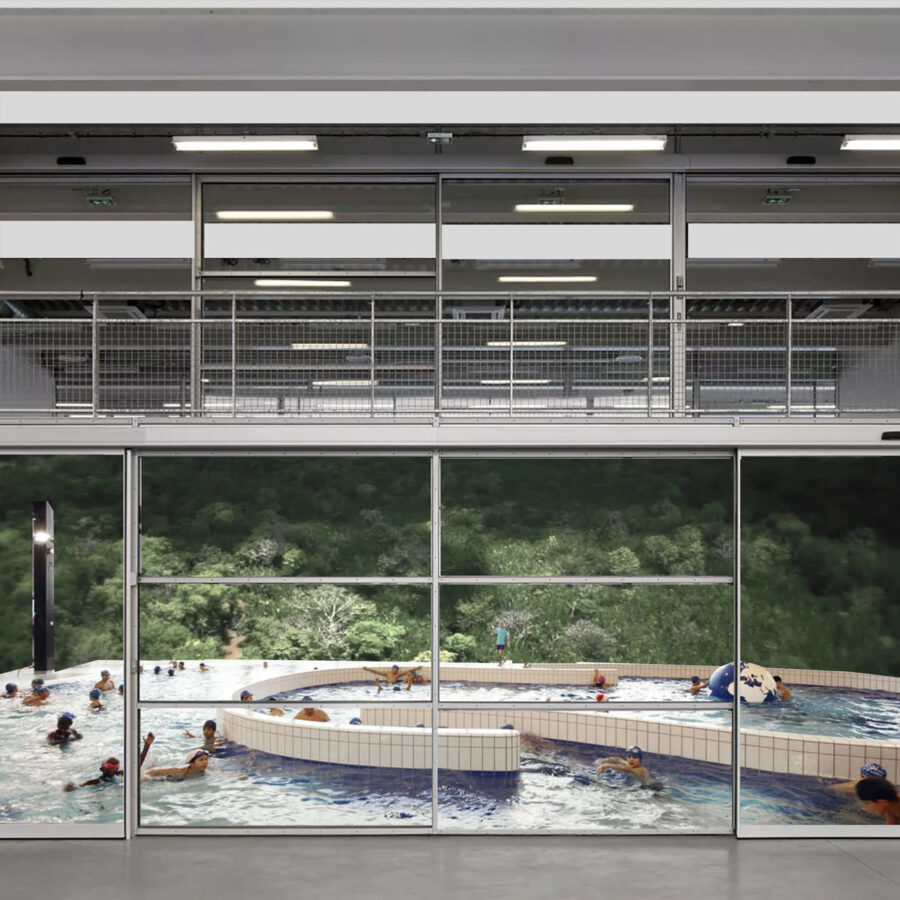
Connect
A commission for the London School of Architecture to curate the second graduating cohort’s summer exhibition, set within the New West Wing and River Rooms of Somerset House. The exhibition was kindly sponsored by Jewson who provided the majority of materials from which the exhibition was constructed. This consisted of re-usable items such as block work, scaffolding planks and heras fencing which were all put back into circulation, minimising waste.
https://www.architectsjournal.co.uk/practice/students/degree-show-review-london-school-of-architecture
Image Credits: Valerie Bennett
www.the-lsa.org
www.somersethouse.org.uk
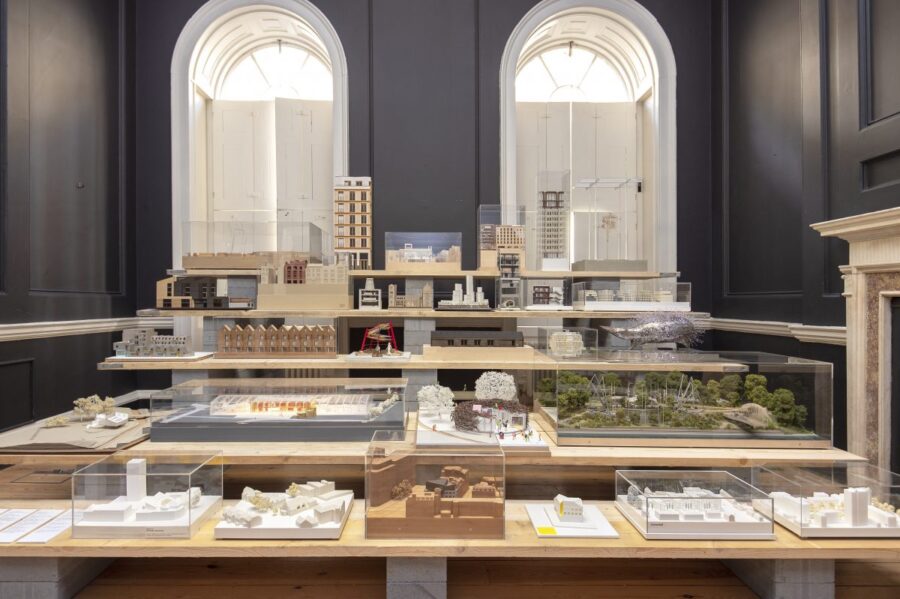
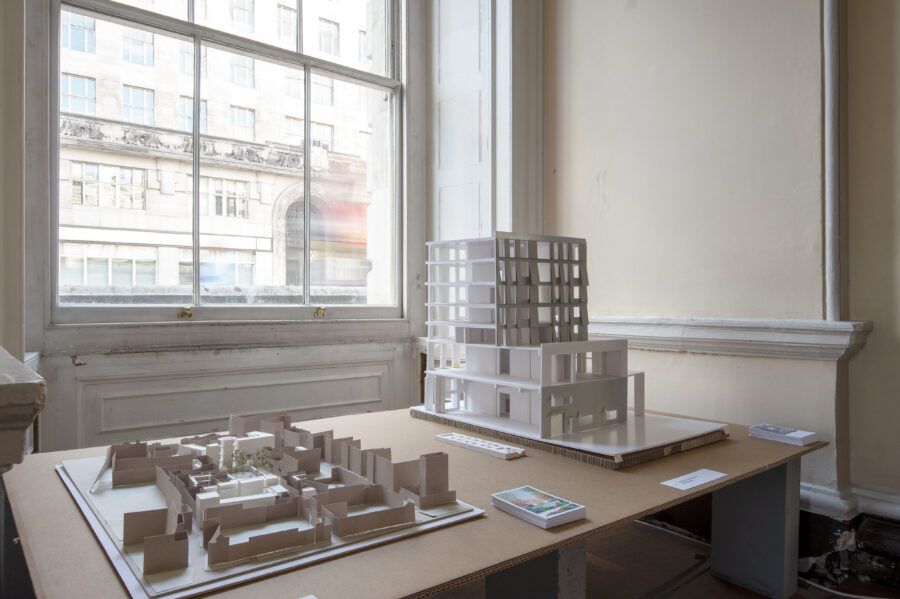
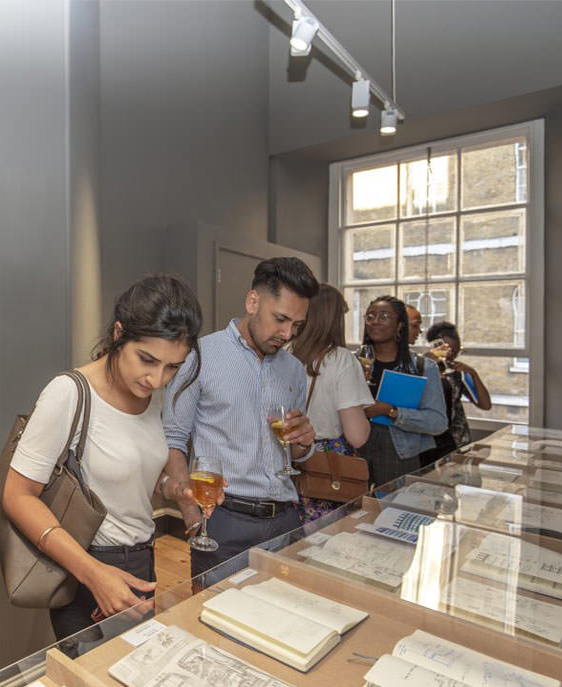
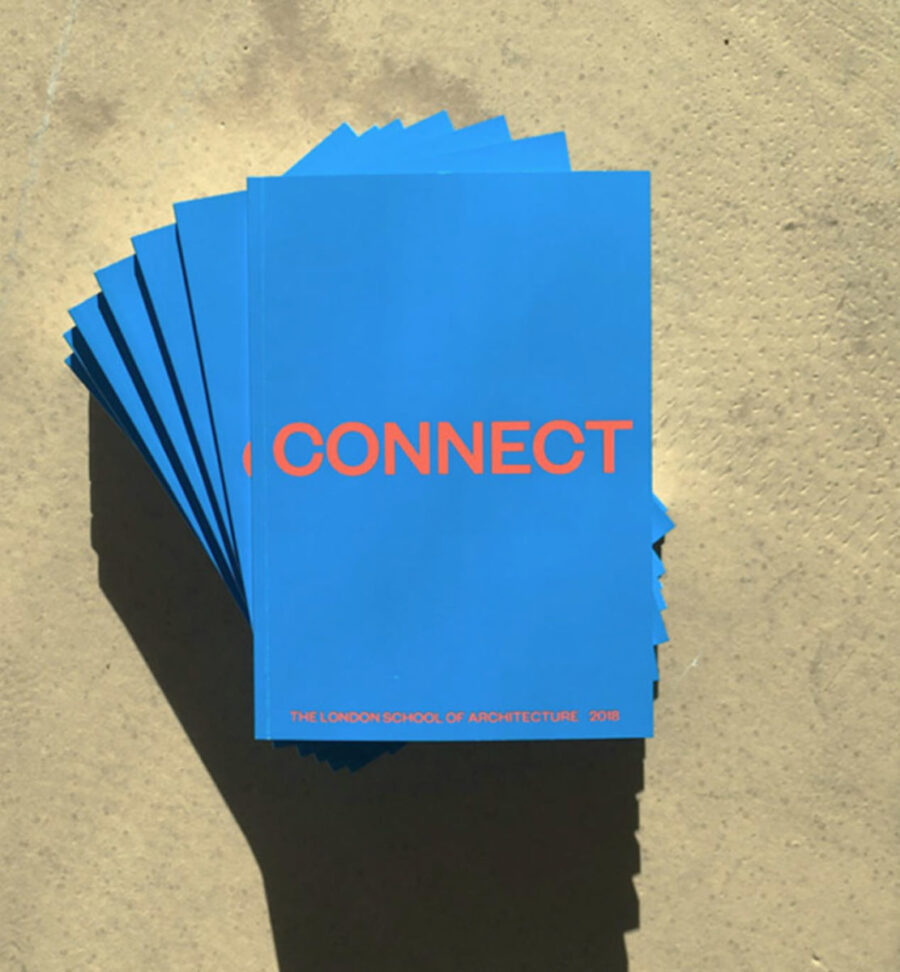
Sonic Capsule 9
An immersive installation project with Andree Martis, currently in development.
